How to Find & Sell Private Label Products: Beginner's Guide
June 6, 2023
June 6, 2023
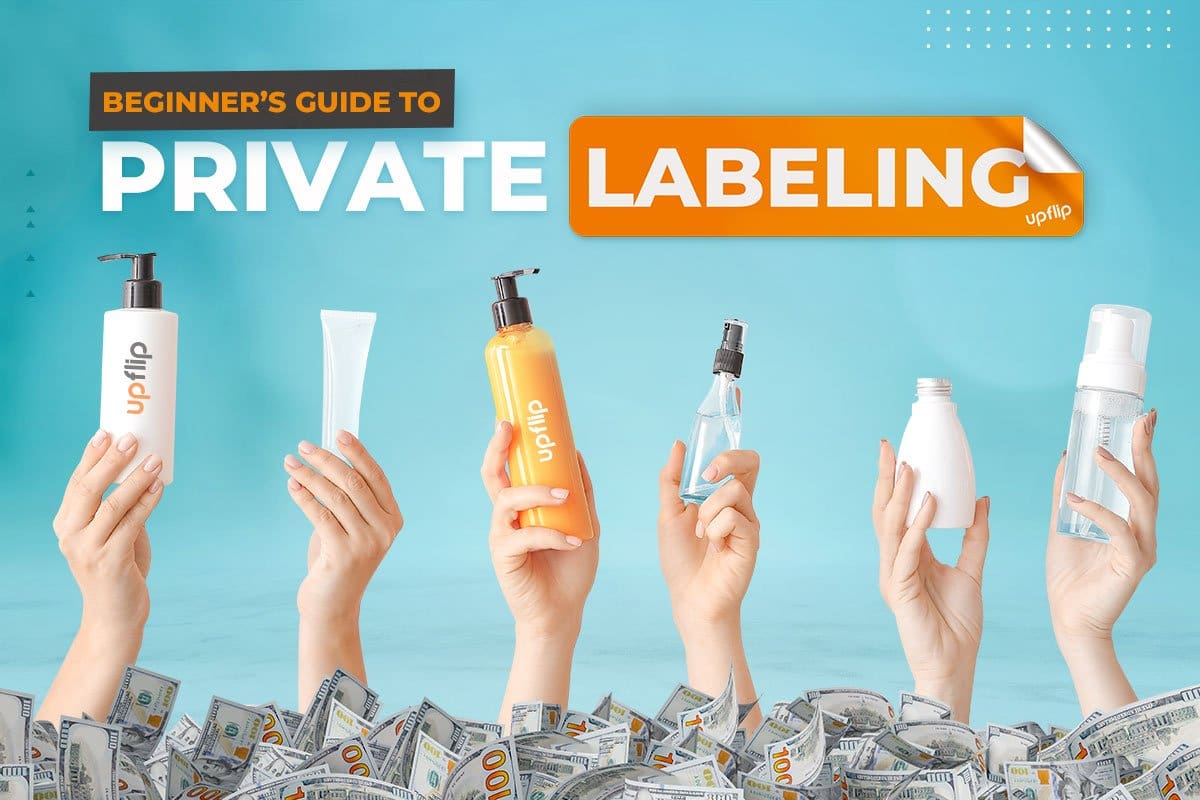
From grocery stores to Amazon, you see private label products all day long. But do you know how to find private label products?
We’ve talked to a lot of people who make money selling private label products. Amazon FBA is one of their favorite tools to sell online, and they had some great tips about other sales outlets as well.
We’ll provide you with a guide to the product development process with input from interviews we’ve done with some of the most successful independent private label sellers.
You’ll learn all there is to know on topics like these:
Click any of the links above to jump to the section that most interests you.
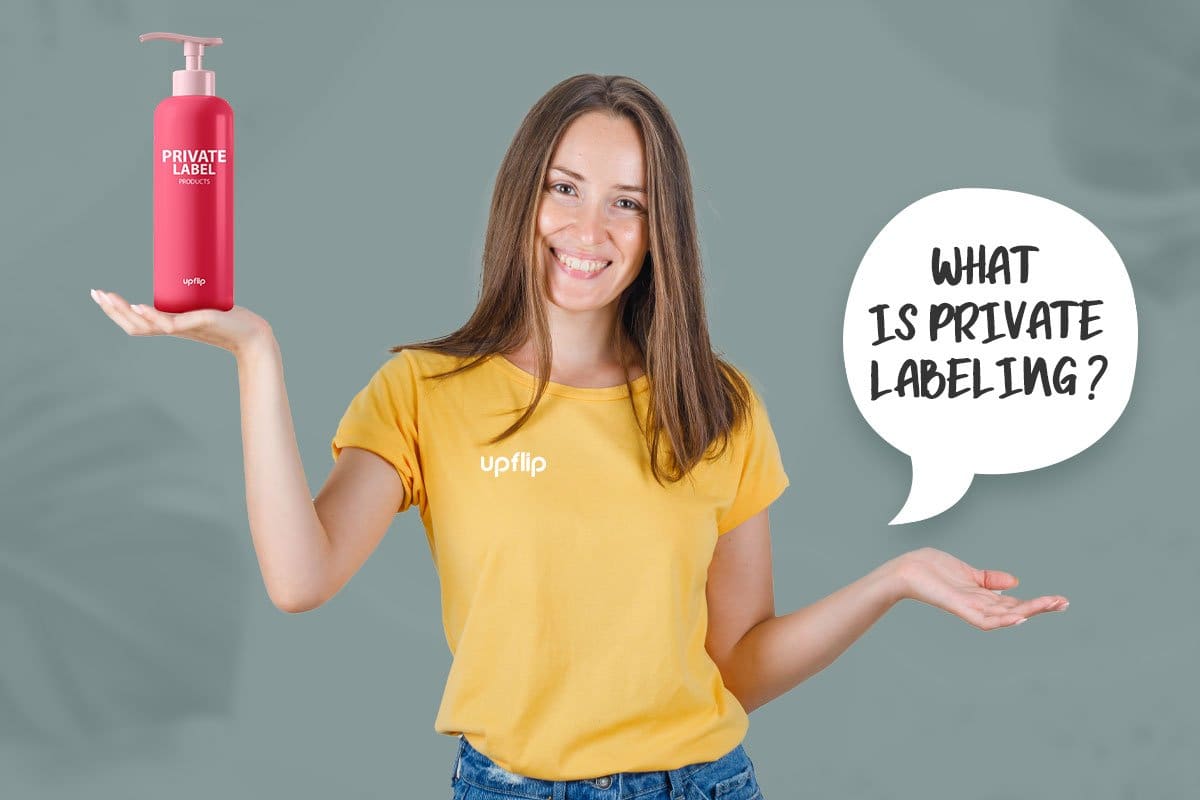
Private label products are products created by a manufacturer with the intent for an exclusive third party to sell them using a different brand name. Private labeling removes the need to invest in high-priced equipment by paying an existing manufacturer for the production of goods.
Private label businesses are growing increasingly popular in the ecommerce field thanks to the reduced startup costs of a private label brand.
Understanding the difference between private label vs white label is important before getting started in this field. Private labeling provides exclusivity for the retailer or wholesaler. White labeling allows multiple retailers to add their branding to the product and sell it as their own.
Here’s what this confusion can cause harm to your business: If you create a private label product and sign a manufacturing agreement as a white label product, you have effectively allowed the third-party manufacturer to use and sell your intellectual property for their gains. Moral of the story? Make sure to read your contract!
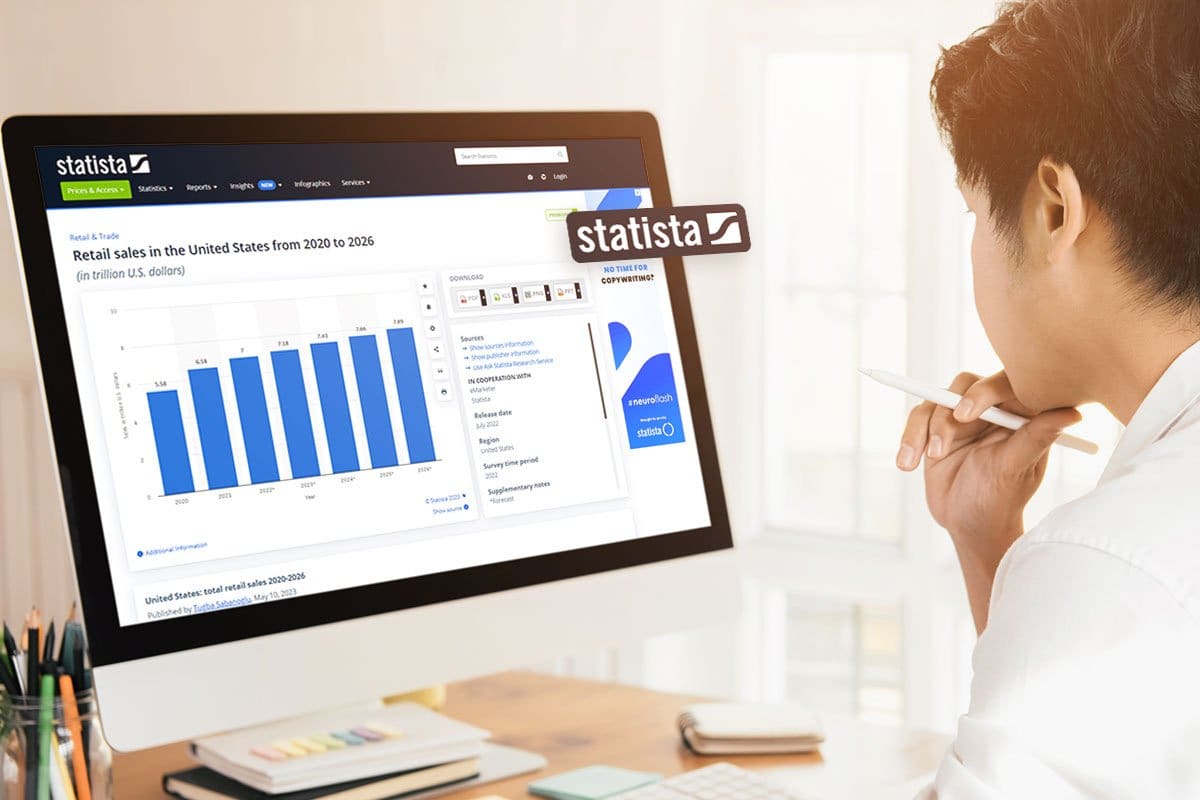
According to Statista, private label products accounted for $6.6 trillion of 2021 GDP and are projected to hit $7.9 trillion in 2026. This includes big brands that offer their own branded products. To draw inspiration from which products sell most, look at the major retail private labels:
You might want to consider becoming a private label seller for these advantages:
Selling private label products doesn’t come without challenges. Here are some to keep in mind:
You’ll need to perform the following tasks when you create your own brand name products:
First, you’ll want to perform market research. You’ll want to establish:
This will impact what private label manufacturers you want to approach. It will also impact the profit margins you earn on your private label products. Most private labels work best with products that are replenished regularly, but there are a few that don’t fall into this category.

We pulled a list of commonly searched private label, white label, and branded products from ahrefs.com to find out what industries use the most private label-ready products. If you’re looking for a niche market, consider these private labeling ideas:
This is just an overview to get the wheels turning in your brain. We’ll cover some of these categories more in-depth later in the article.
Next, you’ll need to choose a private label supplier. There are plenty of private label suppliers, depending on your industry. Check a supplier directory like:
(Keep reading—there’s more info on these manufacturers later on.)
Once you’ve found that a private label manufacturer creates products similar to the ones you want to sell, it’s time to ask them to send a sample.
Before you get into a minimum order quantity contract and provide the third party manufacturer with your intellectual property, you want to verify they are a reliable manufacturer. That means you’ll want to ask the private label manufacturer for some samples.
Pay attention to aspects like:
These questions will help you set benchmarks when comparing the private label products. Once you establish which manufacturer to make part of your supply chain, it’s time to move to the next step.

Private labeling will require a contract between your business and the third party manufacturer. The contract terms may be dictated by the private label manufacturer, the private label, or negotiated.
If you are using print-on-demand, the manufacturer will almost always dictate the terms, while terms for a custom-made product will be negotiated.
Even when terms are negotiated, there are some specifics that may be unchangeable, like the minimum order quantity (MOQ) or quality controls.
Now that you understand the process of private labeling, let’s circle back to where to find private label products to start your business.
There are a ton of ways to find private label products for small business ventures. As part of this article, I looked for the most commonly searched private and white label products on Google. Here are the high-level categories that are most searched.

This category includes the following search terms:
It comes as no surprise to me that Las Vegas leads the way in trade shows to promote private label products. If you want to know how to find private label products, go check out some of these conventions.
The following conventions will have private label wholesale beauty product suppliers:
Some other tradeshows to check out include:
Find more conventions and trade shows that present private label products.

To find hemp and CBD private label products to sell on Amazon and other sites, search terms like:
Joy Organics appears to be one of the better private label products examples in this industry.

Find US and Canadian manufacturers, suppliers, and buyers on this online database. Thomasnet lets you compare manufacturers by size, history, sales, standards they follow, and more. This free database is a great place to start your journey creating private label products. Learn more about Thomasnet.
AOP+ sells print-on-demand products and connects to Etsy and Shopify to make selling in the US, UK, and EU easier. They handle order processing and fulfillment in-house, which is a rarity for print-on-demand companies. Get clothing, accessories, and other products manufactured and shipped to your customers with AOP+.
Maker’s Row was started in 2012 to connect businesses with American manufacturers. Unfortunately, this platform has a monthly or annual fee that will cost up to $1,800 per year. You can see Maker’s Row online or at many trade shows like the MAGIC fashion show.
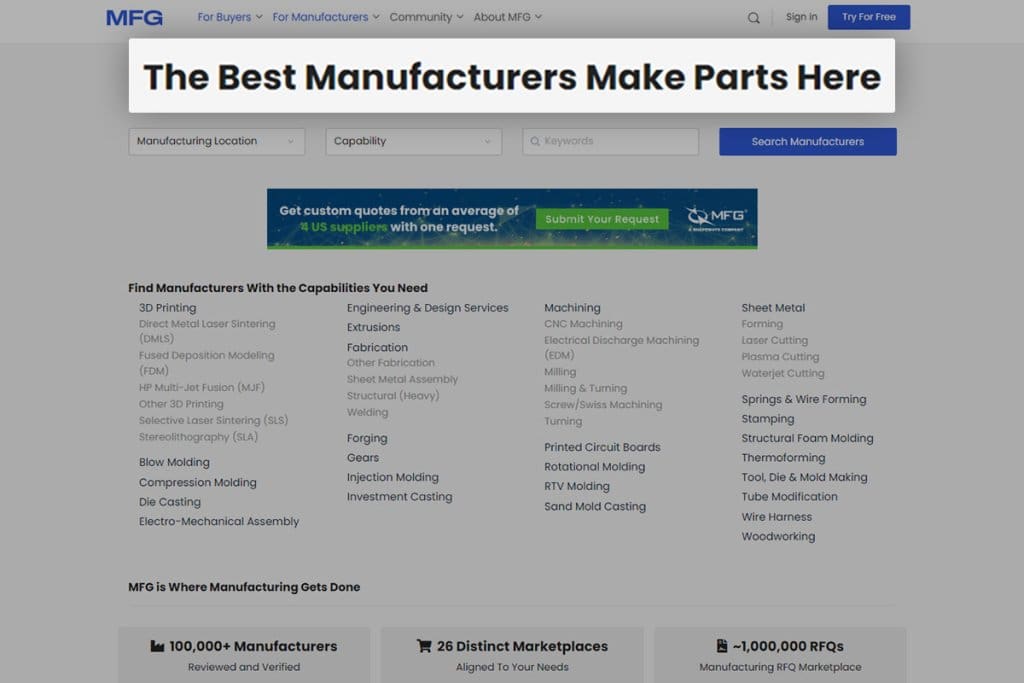
Another popular directory is MFG. You can search suppliers by continent. This directory is over 20 years old and allows you to find manufacturers or create a free profile to request quotes and use other features. While I haven’t dug deep into MFG’s database, they seem to be more focused on metals and plastics.
This free B2B connects businesses in more than 60 countries. Kompass is one of the smaller databases, but it has more countries you can work with than other directories. I also really like that Kompass makes it easy to tell what kind of suppliers they have on their website.
Check out SaleHoo for tools that go beyond a suppliers’ directory. This company offers educational materials, market research tools, and a forum to get the most out of your private label products and dropshipping company. You’ll have options for monthly, annual, or lifetime plans depending on your needs, but you can get access for as low as $67.

After you have sourced your private label products, you’ll need to set up the system to sell your private label goods. You’ll need to perform the following steps when you have private label products to sell.
Let’s go through each of the steps about selling private label products.
A private label business should form their legal business entity before they start accumulating costs. This means you’ll need to:
You can learn to do all these in our learning hub, which gives step-by-step instructions for each of the steps for starting a business.
Now that your private label business is legal, you’ll want to create custom packaging for your private label products. Depending on the product, the business labels might be:
Check out PackLane’s website for examples of product packages and how quantity impacts pricing. Some of the packaging can be as high as $50 for a single box, but you can save up to 90% when you buy in bulk.

eCommerce business models make it easy for a business owner to build their own websites and ecommerce stores. This is really important when you have private label products to sell (I’ll tell you more in our cautionary tale). A private label product company will need to:
Learn more about creating an online store.
![]()
A consulting client of mine contracted one of the top web development companies in the area to create his online store.
He wanted the first heading to be below the fold (not visible when you first open the webpage) because he spent $10K+ on photography to have beautiful pictures that conveyed the style of the brand.
The website developers refused and never delivered a final product because they disagreed with his request.
Long story short, the client has spent hundreds of thousands of dollars, has huge amounts of inventory, and has pretty much written off his business because he paid for everything on the front end and never got past this hiccup with the website.
Once you have an online store, you’ll want to start marketing your products. There are a lot of ways to market private labeling companies. Some of the best ways are:
Even the best private label products aren’t going to sell themselves. People have to know about them. You need to perform keyword research and optimize your site to meet the terms that people search for when looking for a product.
For instance, the owner of Pooch Selfie, a custom product that holds a tennis ball on top of a cell phone, gets around 50% of his ecommerce store traffic from people who find his private label products by searching for things like “dog selfie sticks” or “Shark Tank dog toys” as opposed to the branded term.
Watch the video below for his tips on creating a custom product.
You’ll want to use the keywords you found to drive your content by using them in product pages, URLs, blogs, pictures, and more. Content marketing lets search engines and consumers know that you are an active online business.
The more useful the content you create, the more likely your online store is to rank for the subject matters you are targeting. Here at UpFlip, we use SurferSEO and Ahrefs to help our brands rank for keywords.

After you’ve written content for your private label business, you should share it on social media. Make sure the content fits both your private label business and the social media platform you share it on. Some types of content perform better on certain social media platforms:
Experiment with posting times to see what time works best for your own brand.
Private label brands can do well with product giveaways. You’ll want to make the giveaway something that is inexpensive for you, but that will get your private labeling where people use it as frequently as possible.
For instance, if you sell private label car care products you might want to do a giveaway for fun branded air fresheners. This gives you an easy way to collect customers’ emails and information to target them for other car cleaning products.
Influencer marketing is a great way to help people find private label products. This marketing business model makes use of people who have a large following on social media who can talk about specific niches and bring awareness to their followers.
They can help boost your private label product sales by using your products in a video and sharing the brand identity with their followers. This works particularly well for private label beauty products as followers are eager to learn what an influencer does to achieve specific makeup or hairstyle.
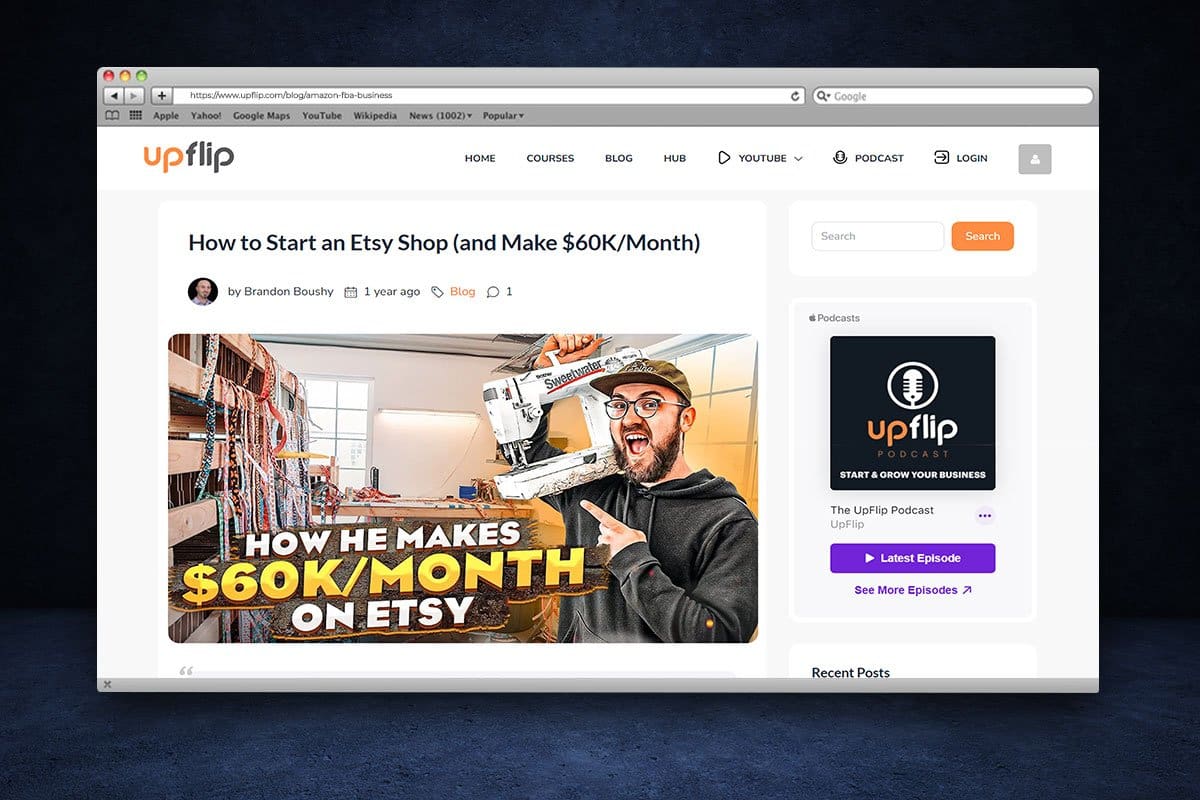
Create an online store on every marketplace you can to get your private labeling in front of as many eyes as you can. According to SimilarWeb, the top places to sell private labeled products are:
Hopefully, your product research and private labeling work has paid off. Next, you should start selling your private label products for small business profits.
Once you’ve created your online store, there are plenty of additional ways to sell your products. You can sell:
Private label companies can also upsell the private label products by suggesting an additional purchase of their own products or retail brands that work well with them.
For instance, if you private label hair products, you can suggest someone buy the conditioner when they buy the shampoo and give the customer a discount for buying both together.
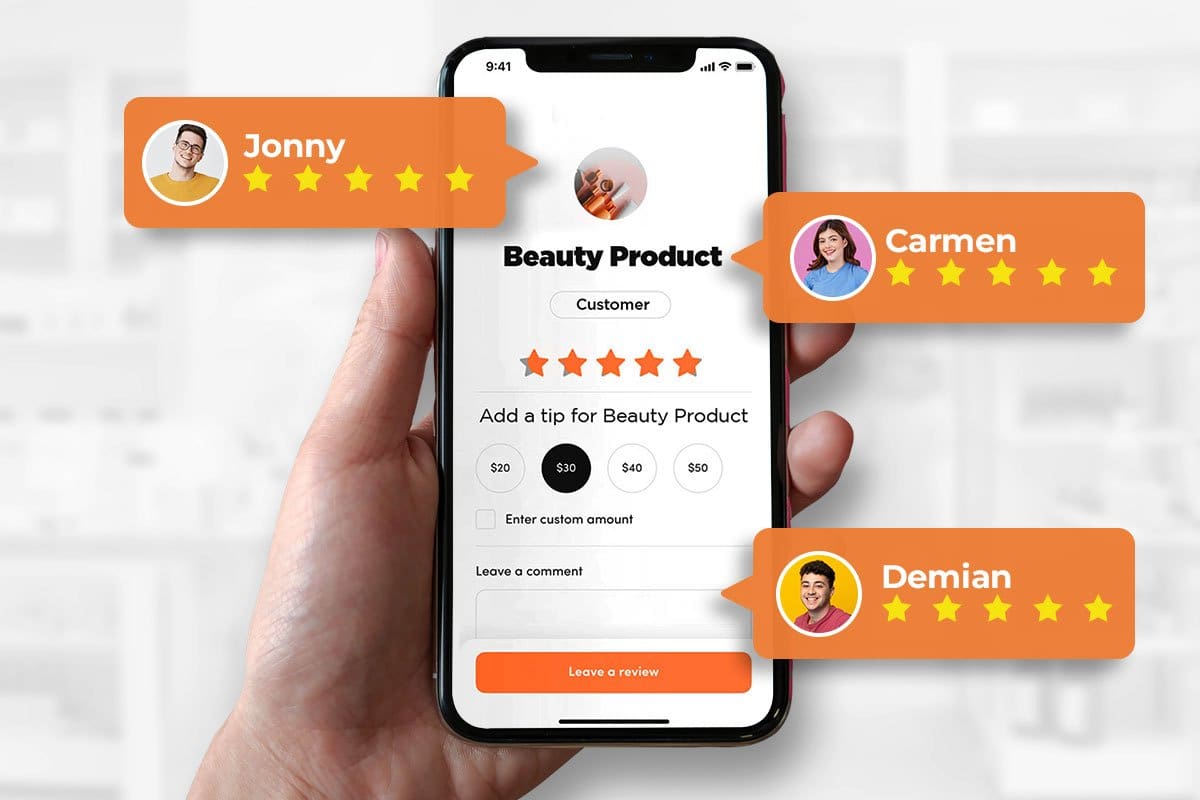
No brand starts with instant name recognition. You’ll need to get reviews for your private label to help overcome poor consumer perception of private and white label products.
Once people see that a company has great product reviews, they are more likely to accept that the brand identity isn’t just trying to make higher profit margins on generic products.
One of the best ways to do this is to automate requests for reviews several days to a week after the consumer has received the product. (Be careful though. Amazon private label products can get in trouble if they request reviews through means other than the standard product review process.)
One of the ways many business owners and self-employed people get in trouble is by forgetting to pay their taxes. Many locations require quarterly tax filings for private label business ventures.
These filings may include federal income taxes, state income taxes, sales taxes, and payroll taxes. Make sure to keep track of the due dates and work with a licensed tax preparer.
Amazon is a great place to sell a private label. Amazon offers multiple ways for merchants to sell, including Amazon FBA, Amazon Merch, and other strategies. It doesn’t matter which strategy you choose; you’ll want to:

You’ll want to research Amazon’s seller options to decide which one you want to use. Most Amazon sellers use the FBA service, in which the manufacturer ships your bulk goods to Amazon and Amazon fulfills the order for a referral fee between 5 and 20%.
Make sure to read the fees really well because they impact pricing and profitability.
One particularly useful trick you can use with Amazon FBA is working with a dropshipper to produce your custom products. Place an original bulk order that is sent to the Amazon warehouse, then every time a product is ordered, have Amazon ship it, send the dropshipper money for more, and you keep the profits.
Just like that, you get the benefits of Prime and dropshipping all in one.
You’ll also want to research the demand for the product category. Make sure you study the number of competitors and the number of searches for similar products. Michael Jackness, the owner of treadmill.com and Amazon FBA private label stores, told us:
Hear more from Michael to learn how he created a $9 million annual ecommerce company.
Learn more about market research.
Next, you’ll need to sign up for an Amazon seller account. Go to Seller Central. We show you how to set up an Amazon account in our blog about an Amazon FBA business.
Test the products to make sure there are no quality control issues. Depending on the type of product, you’ll do this in different ways.
For example, I stress-test t-shirts by running them through a wash to test how many times you can wash and dry them before the designs wear off. With candles, you might want to test the burn time and see how long it takes to burn them down to nothing.
There are plenty of ways to test any product; you should definitely know how long your product will last.
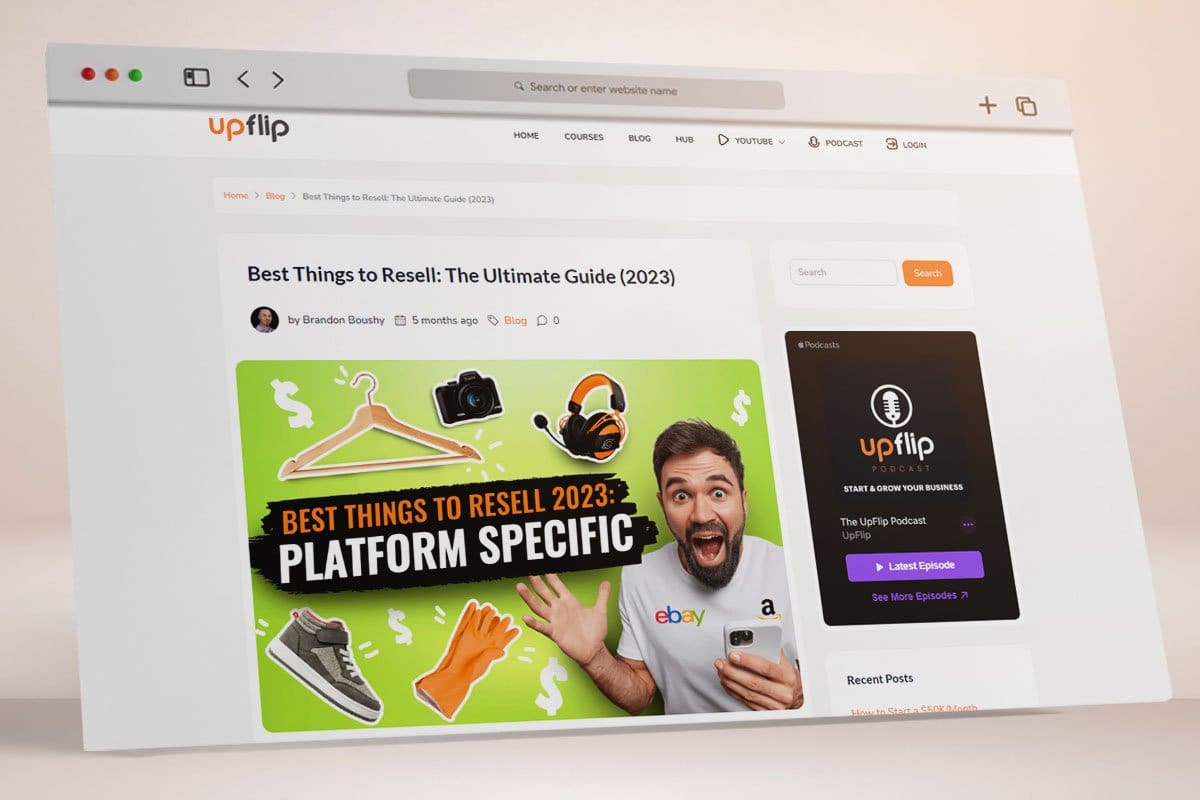
We’ve already provided a list of private label products and where to find them, but you should check out our best things to resell blog for more information on the best products to private label.
Any branded products should be registered with Amazon brand services to protect them from being stolen. To do this, you’ll need a registered trademark with the appropriate government office. Check out Amazon’s Brand Services page.
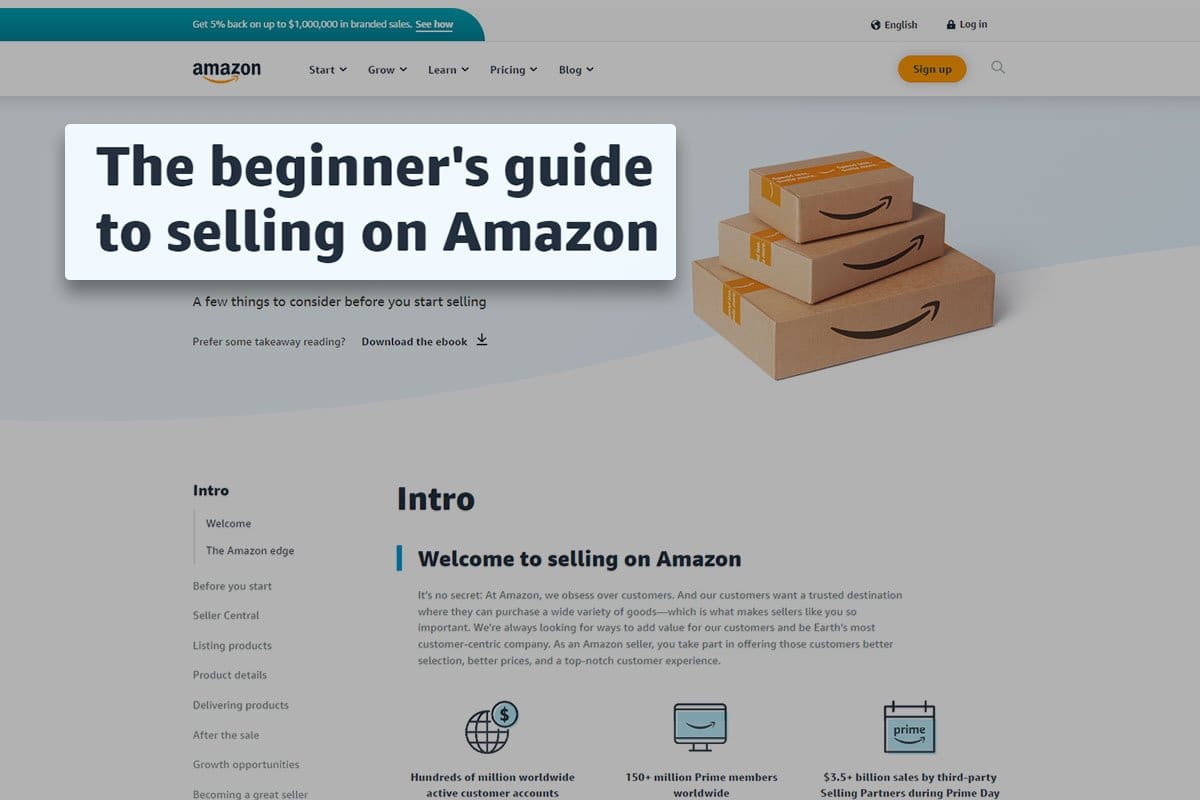
To make the most of Amazon, you need to have an Amazon FBA account. Sending your products to Amazon’s warehouse means they qualify for Amazon Prime. You can also qualify for Prime with self fulfillment (but there are more stringent requirements). I strongly suggest reading Amazon’s guide before getting started as well.
The white labeled definition is to provide the exact same product to different companies with their brand logo on it. The manufacturer normally offers this service for the top products to sell online because it helps them run closer to 100% capacity.
The name comes from manufacturers providing the products with a blank white label so other companies can sell the product with their branding.
Vitamins, marketing, and other industries use this strategy to help business owners make more money by filling excess capacity while the marketers can increase their offerings without the additional costs of creating a new manufacturing facility.
Private Label Masters is an affiliate course that teaches people about the best thing to sell online through private labeling and white labeling.
The best product to sell online is a product that has the following characteristics:
At this point, you should be ready to start your market research and start an Amazon private label store. I strongly recommend using the links in this blog to dig deeper into the subject matters you need more information about.
What experience do you have with white label, private label, and custom-made products?
Brandon Boushy
 Real estate agents and brokers are classified under the North American Industry Classification System code 53121. Nearly 1 million businesses split nearly $200 billion in revenue and have around a 21% profit margin. That means nearly $200,000 revenue and $42,000 profit per business.
Let’s look at the revenue and expenses of real estate businesses.
Real estate agents and brokers are classified under the North American Industry Classification System code 53121. Nearly 1 million businesses split nearly $200 billion in revenue and have around a 21% profit margin. That means nearly $200,000 revenue and $42,000 profit per business.
Let’s look at the revenue and expenses of real estate businesses.
 Let’s look at the expenses for a real estate agent.
Let’s look at the expenses for a real estate agent.
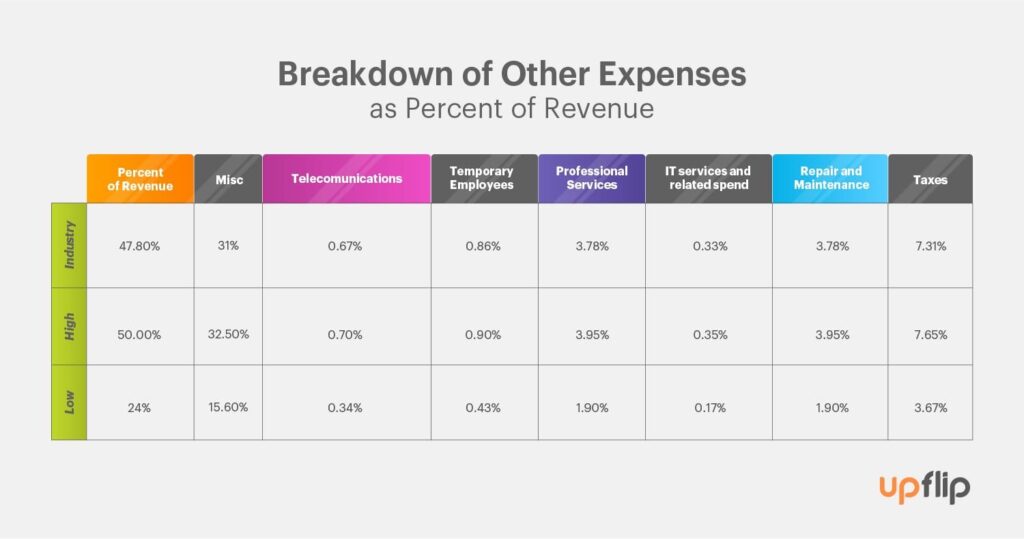
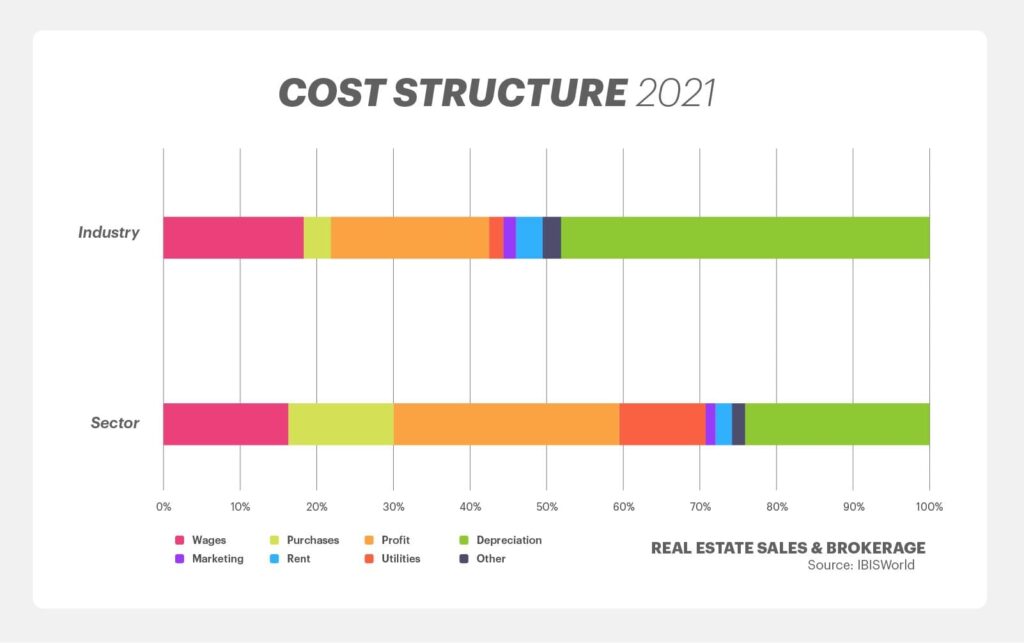
Check out our interview with him below:
We asked Santino how average and top performing agents perform. He told us: [su_quote]The top agent came on early and spent 3 to 4 hours being mentored. He made close to $1 million last year on: Becoming a real estate agent requires building a personal and professional network. Some of the best ways to build your network and expand your knowledge include:
Becoming a real estate agent requires building a personal and professional network. Some of the best ways to build your network and expand your knowledge include:
 Santino told us he expects crypto to start making a bigger play in real estate, but warned:
[su_quote]Lots of companies have tried to disrupt the real estate industry, but none have successfully changed it.[/su_quote]
Before I continue, I should probably warn you that crypto is currently under-regulated in the U.S. Evaluate the risks carefully.
There are a few ways that real estate and blockchain interact:
[su_note note_color="#dbeafc"]
Santino told us he expects crypto to start making a bigger play in real estate, but warned:
[su_quote]Lots of companies have tried to disrupt the real estate industry, but none have successfully changed it.[/su_quote]
Before I continue, I should probably warn you that crypto is currently under-regulated in the U.S. Evaluate the risks carefully.
There are a few ways that real estate and blockchain interact:
[su_note note_color="#dbeafc"]
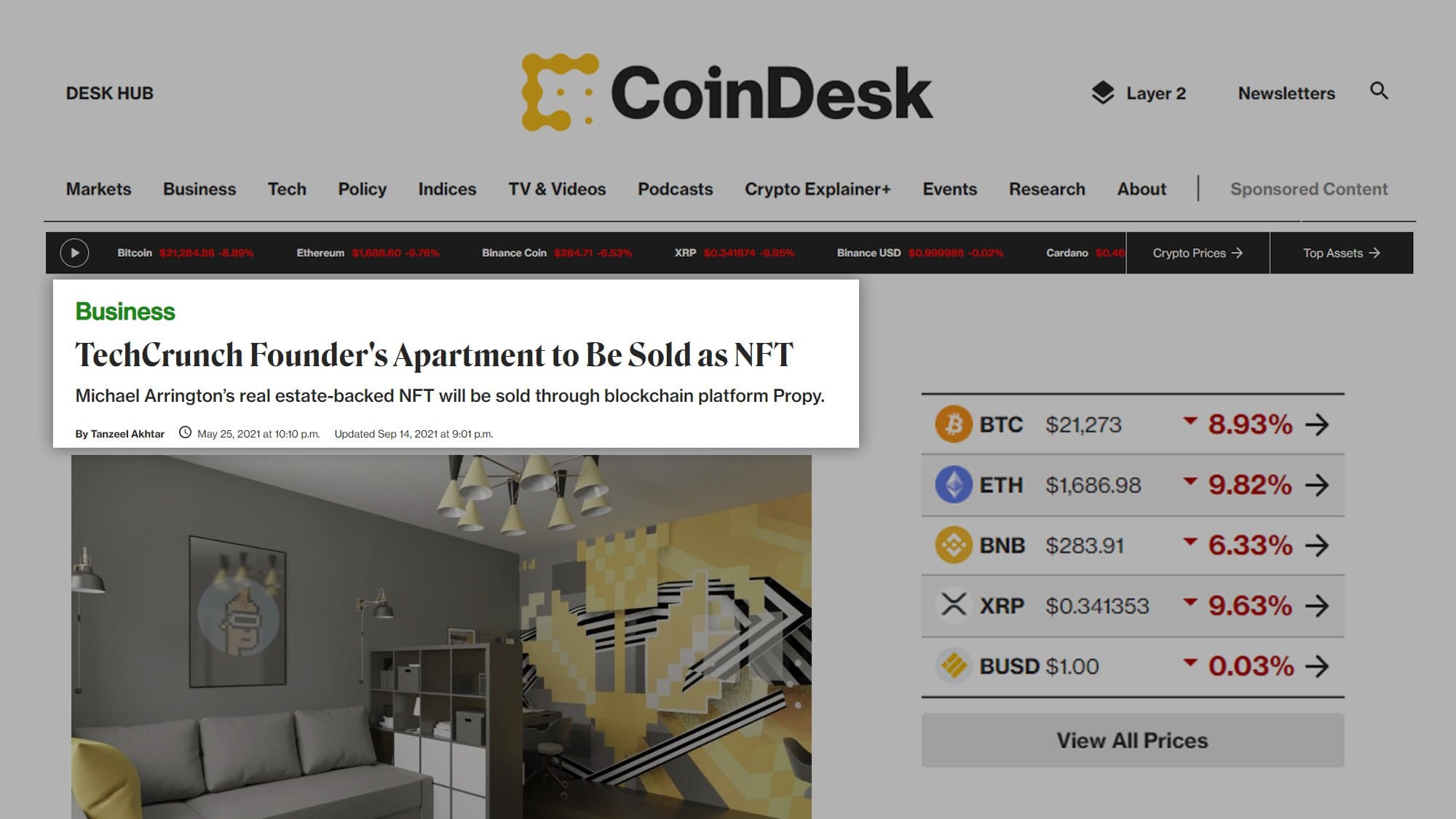 Nonfungible Tokens (NFTs) have entered the real estate market and are being used as a way to sell homes. While most companies have not gone to this approach, I would expect many to in the future because:
Nonfungible Tokens (NFTs) have entered the real estate market and are being used as a way to sell homes. While most companies have not gone to this approach, I would expect many to in the future because:
 The metaverse is a virtual world. It’s basically the world people unplug from in the movie the Matrix. Like the real world, it allows transactions including real estate transactions.
Sandbox is one of the most popular metaverses where users can buy and sell land, but there are more coming out every day. I’m personally investing in Stageverse at the moment.
Good news! You don’t need to have a real estate license to buy and sell metaverse lands. If you want to learn more about how to become a metaverse real estate agent, check out this Academicful blog.
Let’s look at the first step of becoming a real estate agent.
The metaverse is a virtual world. It’s basically the world people unplug from in the movie the Matrix. Like the real world, it allows transactions including real estate transactions.
Sandbox is one of the most popular metaverses where users can buy and sell land, but there are more coming out every day. I’m personally investing in Stageverse at the moment.
Good news! You don’t need to have a real estate license to buy and sell metaverse lands. If you want to learn more about how to become a metaverse real estate agent, check out this Academicful blog.
Let’s look at the first step of becoming a real estate agent.
Approved Schools |
Take Exam |
Apply for License |
Age Requirement |
High School Required? |
Criminal Record |
Past Rejections, Revocation Limitation |
Number of Pre license hours |
Types of Licenses |
Continuing Education Requirements |
State Abbreviation |
|
| How to get a real estate license in Alabama | Go for ones with high success rates | Exam Centers $73 exam fee | Instructions for applying for license | 19+ | Required | No Felonies | None in Last 2 Years | 60 | Temporary License and Permanent Salesperson's License | 30 hours in first year, 15 hours every 2 years after getting permanent salesperson | AL |
| How to get a real estate license in Alaska | List of schools | Exams are on specific days $100 fee in major cities | Find forms for RE Salesperson and Broker | 19 | Not Specified | Eligible 7 years after completion of sentence | Not Specified | 40 | Salesperson, broker, and broker associate options | 30 first year, 20 every 2 years | AK |
| How to get a real estate license in Arizona | Find Licensed RE Schools | Pearson VUE $75 fee | License $60 | 18 | Not Specified | Disclose all, no felonies allowed, fingerprinting | Not denied in 1 year or revoked within 2 years | 90+6 hours contract writing | Not Specified | 24 hours every 2 years | AZ |
| How to get a real estate license in Arkansas | AR Licensed RE schools | Pearson Vue $75 fee | License $86.25 residents, $161.25 non-residents | 18 | Not Specified | Background check, decided on case-by-case basis | Not Specified | 60 | Not Specified | 18 in first 6 months, 7 per year | AR |
| How to get a real estate license in California | CA Approved RE Courses | Apply for Exam or Exam/License | Apply for Exam or Exam/License | 18 | Not Specified | fingerprint+background check, any crime can disqualify you | Not Specified | 135 hours (3 courses at college or RE school | Not Specified | 45 hours every 4 years | CA |
| How to get a real estate license in Colorado | Colorado Broker Education | PSI Exams | Apply for License | 18 | Not Specified | background and fingerprinting | Not Specified | 168 hours | Broker License Only | 24 hours every 3 years | CO |
| How to get a real estate license in Connecticut | CT approved Pre-licensing education | CT PSI Exams | CT Licensing | 18 | Not Specified | Not Specified | Not Specified | 60 hours, 120 and 2 years experience to become broker | salesperson, broker | 12 hours per year before May 31st | CT |
| How to get a real estate license in Delaware | Email DE DPR | DE Pearson VUE Exam | Apply for License | 18 | Not Specified | Allowed after conviction is waived, which takes 5 years | Not Specified | 99 hours | Not Specified | Before April 30th of even number years, you need 21 CE hours, first batch is prorated. | DE |
| How to get a real estate license in Florida | FL Licensed Schools Search | FL Pearson VUE Page | Get your FL Real Estate License | 18 | Yes or GED | Background check and disclose convictions | Not Specified | 63 hours | Not Specified | 45 first 2 years, and 14 every 2 years after | FL |
| How to get a real estate license in Georgia | GA License Real Estate Schools | Administered by AMP $121 Fee | Apply for GA License | 18 | Yes or GED | Pass Background check | Not Specified | 75 hours at RE school, 10 quarter hours, or 6 semester hours at an accredited college | Not Specified | 25 hours first year 36 hours every 4 years | GA |
| How to get a real estate license in Hawaii | Go To Course Search and Download the providers | HI PSI Exams | Forms to Apply | 18 | Yes or GED | Not Specified | 60 hours | Not Specified | 20 hours every 2 years | HI | |
| How to get a real estate license in Idaho | ID Real Estate Courses | ID Pearson VUE Exams | Follow this checklist then apply | 18 | Yes or GED | background and fingerprinting | Not Specified | 90 hours | Not Specified | 19 hours every 2 years | ID |
| How to get a real estate license in Illinois | IL Approved Courses | PSI Exams | Illinois Dept. of Financial & Professional Regulation Online Portal | 18 | Yes or GED | background check | Not Specified | 75 hours | broker | 45 hours after passing test and 24 hours every 2 years | IL |
| How to get a real estate license in Indiana | PA Approved Providers | Indiana PSI EXAM site | IN License Application | 18 | Yes or GED | background check | Not Specified | 90 hours | Not Specified | 30 in first 2 years, 36 every three years after | IN |
| How to get a real estate license in Iowa | Iowa information on RE Licensing | 18 | Yes or GED | background check | Not Specified | 60 hours+36 in class hours | Not Specified | 36 hours every 3 years | IA | ||
| How to get a real estate license in Kansas | KS Requirements for RE Licensing | 18 | Yes or GED | background check | Not Specified | 60 hours | Not Specified | 12 hours every 2 years | KS | ||
| How to get a real estate license in Kentucky | KY Real Estate Commission | 18 | Yes or GED | background check | Not Specified | 96 hours or 6 credit hours from a college | Not Specified | 48 hours in first 2 years, then 6 hours every 2 years afterwards | KY | ||
| How to get a real estate license in Louisiana | LA Real Estate Commision | 18 | Yes or GED | background check | Not Specified | 90 hours | Not Specified | 45 hours in the first 180 days + 4 years by Dec 31, then 12 hours each year by Dec 31 | LA | ||
| How to get a real estate license in Maine | Maine Real Estate Commission | 18 | Yes or GED | 3 notarized letters of recommendation | Not Specified | 55 hours | Non-renewable entry level sales agent, associate broker, broker | Have to complete the pre-license associate broker and complete another exam before license expires. The associate broker will require 21 hours every 2 years | ME | ||
| How to get a real estate license in Maryland | MD Real Estate Commision | 18 | Not Specified | Good character | Not Specified | 60 hours | Not Specified | MD | |||
| How to get a real estate license in Massachusetts | MA Real Estate Licensing Page | 18 | Not Specified | Not Specified | Not Specified | 40 hours | Not Specified | 12 credits every 2 years | MA | ||
| How to get a real estate license in Michigan | MI Real Estate Licensing | 18 | Not Specified | Not Specified | Not Specified | 40 hours | Not Specified | 18 every 3 years | MI | ||
| How to get a real estate license in Minnesota | MN Real Estate Licensing | 18 | Yes or GED | Not Specified | Not Specified | 90 hours or 3 classes, you can take the test after first and complete others in first year | Need sponsor from brokerage | 15 hours per year | MN | ||
| How to get a real estate license in Mississippi | Warning MS RE Commission has a page from 1998 | 18 | Not Specified | Not Specified | Not Specified | 60 hours | Need sponsor from brokerage | 30 hours in first year, 16 every 2 years | MS | ||
| How to get a real estate license in Missouri | MO Real Estate | 18 | Yes or GED | Background check (after passing test) | Not Specified | 48 hours, be a licensed attorney, or be granted a one-time sitting. | Not Specified | 24 hour Missouri Real Estate Practice Course (MREP) after passing test, then 12 hours every 2 years | MO | ||
| How to get a real estate license in Montana | ME Real Estate Licensing | 18 | 10th grade or higher | Not Specified | 70 hours | need sponsor | 12 CE hours per year | MT | |||
| How to get a real estate license in Nebraska | NE Real Estate Commision | 19 | Yes or GED | Background check | Not Specified | 3 courses/66 hours | Not Specified | 18 hours every 2 years | NE | ||
| How to get a real estate license in Nevada | NV Real Estate Commision | 18 | Not Specified | Background check | Not Specified | 120 hours | Not Specified | 24 hours every 2 years | NV | ||
| How to get a real estate license in New Hampshire | NH Real Estate Licensing | 18 | Yes or GED | Background check | Not Specified | 40 hours | Not Specified | 15 hours every 2 years | NH | ||
| How to get a real estate license in New Jersey | NJ RE Licensing Info | 18 | Yes or GED | Background check | Not Specified | 75 hours | need sponsor | 12 hours every 2 years | NJ | ||
| How to get a real estate license in New Mexico | NM Regulation and Licensing Department | 18 | Not Specified | Background check and fingerprints | Not Specified | 90 hours | Associate broker | 36 hours every 3 years | NM | ||
| How to get a real estate license in New York | NY Real Estate Agent Page | 18 | Not Specified | No Felonies | Not Specified | 75 hours | Not Specified | 22.5 hours every to years | NY | ||
| How to get a real estate license in North Carolina | NC Real Estate Commission | 18 | Not Specified | background check | Not Specified | 75 hours | provisional license, full license | 90 additional hours for full license | NC | ||
| How to get a real estate license in North Dakota | ND Real Estate Commission | 18 | Not Specified | fingerprints, background check, and credit check with fee | Not Specified | 90 hours | Not Specified | 9 per year | ND | ||
| How to get a real estate license in Ohio | OH Real Estate & Professional Licensing | 18 | Yes or GED | Felonies may prohibit licensing | Not Specified | 120 hours | Not Specified | 30 hours every 3 years | OH | ||
| How to get a real estate license in Oklahoma | OK Real Estate Commission | 18 | Not Specified | good moral character | Not Specified | 90 hours | Not Specified | 45 in first year the 21 ever 3 years | OK | ||
| How to get a real estate license in Oregon | OR RE Broker Licensing | 18 | Yes or GED | fingerprints and background check | Not Specified | 150 hours | Not Specified | 30 before first renewal and then 30 every 2 years | OR | ||
| How to get a real estate license in Pennsylvania | PA Real Estate Commission | 18 | Not Specified | pass background check | Not Specified | 75 credits or major in real estate from 4 year college | Not Specified | 14 hours by May 31 of next year, then 14 every 2 years | PA | ||
| How to get a real estate license in Rhode Island | RI Real Estate Agent Guide | 18 | Not Specified | pass background check | Not Specified | 45 hours plus a 3 hour certificate for lead poisoning mitigation | Not Specified | 24 hours every 2 years | RI | ||
| How to get a real estate license in South Carolina | SC Real Estate Agent Info | 18 | Yes or GED | Not Specified | Not Specified | 60 hours, test, then 30 more hours before applying for license | Not Specified | 10 CE hours every 2 years by June 30th | SC | ||
| How to get a real estate license in South Dakota | SD Real Estate Commission | 18 | Not Specified | Not Specified | Not Specified | 116 hours | Not Specified | 30 hours for each of the first 2 renewal periods, then 24 hours every 2 years | SD | ||
| How to get a real estate license in Tennessee | TN Affiliate Broker (RE Agent) | 18 | Not Specified | Not Specified | Not Specified | 90 hours | Not Specified | 16 hours every 2 years | TN | ||
| How to get a real estate license in Texas | TX Real Estate Commission | 18 | Not Specified | fingerprints and background check | Not Specified | 180 hours | Not Specified | 90 hours post license and 2 four-hour legal update courses in first 2 years and 18 hours every 2 years after., | TX | ||
| How to get a real estate license in Utah | UT Div. of Real Estate | 18 | Yes or GED | fingerprints and background check | Not Specified | 120 hours | Not Specified | 18 hours including 12 hour new agent course, 18 hours every 2 years after | UT | ||
| How to get a real estate license in Vermont | VT Real Estate Agent Requirements | 18 | Not Specified | Not Specified | 40 hours | Not Specified | 16 hours every 2 years | VT | |||
| How to get a real estate license in Virginia | VA RE Commission | 18 | Yes or GED | fingerprints and background check | Not Specified | 60 hours | Not Specified | 30 in first two years, 16 hour every 2 years after | VA | ||
| How to get a real estate license in Washington | WA Real Estate Brokers license | 18 | Yes or GED | fingerprints and background check | Not Specified | 90 hours | Broker license | 90CE hours in first 2 years, then 30 hours every 2 years | WA | ||
| How to get a real estate license in West Virginia | WV RE Comm | 18 | Yes or GED | fingerprints and background check | Not Specified | 90 hours | Not Specified | 7 hours each year | WV | ||
| How to get a real estate license in Wisconsin | WI RE Comm | 18 | Not Specified | Not Specified | Not Specified | 72 hours or apply for an RE apprentice by working with broker for 20 hours a week | Not Specified | 18 hours every 2 years | WI | ||
| How to get a real estate license in Wyoming | WY Real Estate License | 18 | Not Specified | fingerprints and background check | Not Specified | 54 hours | Not Specified | 45 hours every 3 years | WY | ||
| How to get a real estate license in Washington D.C. | DC Salesperson guide | Not Specified | Yes or GED | Not Specified | Not Specified | 60 hours | Salesperson | 15 every 2 years | DC | ||
 Getting a new real estate license has other basic requirements including:
Getting a new real estate license has other basic requirements including:


 Santino told us every agent should consider adding the following people or systems to their business to let them focus on serving the customers more:
[su_note note_color="#dbeafc"]
Santino told us every agent should consider adding the following people or systems to their business to let them focus on serving the customers more:
[su_note note_color="#dbeafc"]
 The Internal Revenue Service (IRS) defines passive income as income that meets two standards:
Remember to read IRS Publication 925 to learn about the tax treatment when you earn passive income.
The Internal Revenue Service (IRS) defines passive income as income that meets two standards:
Remember to read IRS Publication 925 to learn about the tax treatment when you earn passive income.
 There are a lot of ways to generate passive income, but here’s Graham’s method:
[su_quote]Find the intersection of what you love and can make money on. It will never dry up.[/su_quote]
He also explained that automation plays a huge role in generating passive income, so you'll want to consider that in your decision-making process. In addition, you might want to consider whether you have the starting capital to create a passive income stream.
Don't worry if you don't have a lot of money left over from your active income. You can start generating passive income with an initial investment of $50 or less.
There are a lot of ways to generate passive income, but here’s Graham’s method:
[su_quote]Find the intersection of what you love and can make money on. It will never dry up.[/su_quote]
He also explained that automation plays a huge role in generating passive income, so you'll want to consider that in your decision-making process. In addition, you might want to consider whether you have the starting capital to create a passive income stream.
Don't worry if you don't have a lot of money left over from your active income. You can start generating passive income with an initial investment of $50 or less.
 Pros:
Pros:
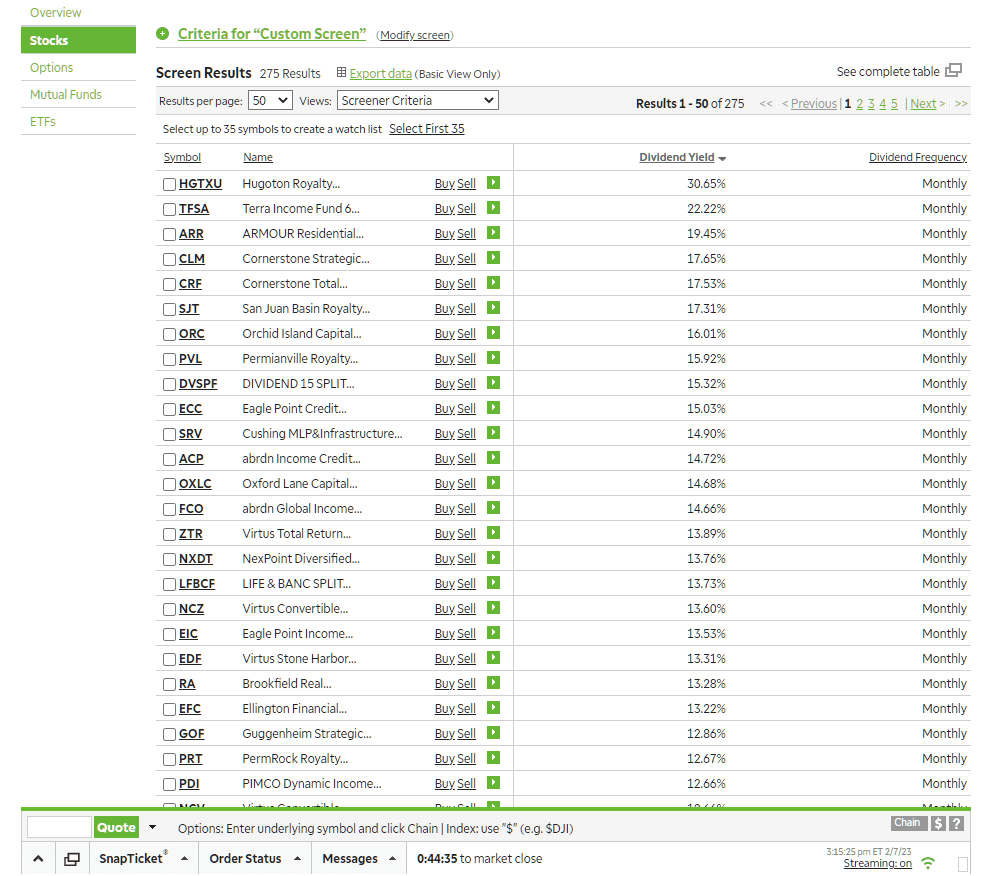 Pros:
Pros:
 [su_note note_color="#dbeafc"]
Upfront time investment: High
Upfront financial investment: $500-$50,000
Passive income potential: High ($50K+ per month)
[/su_note]
You can start an e-commerce store with dropshipping or print-on-demand options to earn passive income. The initial investment is essentially free, but you need to have the money for advertising, the initial cost of the products, and the monthly software costs. Find out how to get started in ecommerce.
Custom apparel is a popular niche for print-on-demand passive income businesses, and one with a high revenue potential. 1-800-Tshirts, for example, brings in $500K every month. You can hear how founder Tom Rauen started and his advice for growing a t-shirt printing business in this interview.
Kerry Egeler founded Shirt School as a resource for online t-shirt printing business owners, so that’s a great site to check out if you want to explore this option (hear our interview with Kerry).
Etsy is a popular store platform for custom designed products. That’s where Vlad Kuksenko sells his custom pet tags and collars. Hear advice on how to get started on Etsy in Vlad’s podcast and YouTube interviews.
Heather Johnson chose Etsy for her print-on-demand business, too, which she started as a side hustle in 2020 and has grown to revenue of $15,000+ a month (listen to our interview with Heather).
Pros:
[su_note note_color="#dbeafc"]
Upfront time investment: High
Upfront financial investment: $500-$50,000
Passive income potential: High ($50K+ per month)
[/su_note]
You can start an e-commerce store with dropshipping or print-on-demand options to earn passive income. The initial investment is essentially free, but you need to have the money for advertising, the initial cost of the products, and the monthly software costs. Find out how to get started in ecommerce.
Custom apparel is a popular niche for print-on-demand passive income businesses, and one with a high revenue potential. 1-800-Tshirts, for example, brings in $500K every month. You can hear how founder Tom Rauen started and his advice for growing a t-shirt printing business in this interview.
Kerry Egeler founded Shirt School as a resource for online t-shirt printing business owners, so that’s a great site to check out if you want to explore this option (hear our interview with Kerry).
Etsy is a popular store platform for custom designed products. That’s where Vlad Kuksenko sells his custom pet tags and collars. Hear advice on how to get started on Etsy in Vlad’s podcast and YouTube interviews.
Heather Johnson chose Etsy for her print-on-demand business, too, which she started as a side hustle in 2020 and has grown to revenue of $15,000+ a month (listen to our interview with Heather).
Pros:
 [su_note note_color="#dbeafc"]
Upfront time investment: Low
Upfront financial investment: $25-$10,000
Passive income potential: 4%-7% of investment
[/su_note]
Bonds are a way to lend money. A company or government asks for an upfront investment and agrees to pay you back more than you lent them. The payment terms will vary based on the amount borrowed, the duration, and the borrower's creditworthiness.
The gold standard of bonds are purchased from U.S. Treasury Direct.
Pros:
[su_note note_color="#dbeafc"]
Upfront time investment: Low
Upfront financial investment: $25-$10,000
Passive income potential: 4%-7% of investment
[/su_note]
Bonds are a way to lend money. A company or government asks for an upfront investment and agrees to pay you back more than you lent them. The payment terms will vary based on the amount borrowed, the duration, and the borrower's creditworthiness.
The gold standard of bonds are purchased from U.S. Treasury Direct.
Pros:
 [su_note note_color="#dbeafc"]
Upfront time investment: Low
Upfront financial investment: Your choice
Passive income potential: 0.15%-5% of investment
[/su_note]
These accounts are offered by legacy and online banks and give customers higher interest rates than you would normally receive. (None of the earning rates beat inflation, though. The best current high-yield savings account earns 3.5% APY, which means you're still losing money after calculating inflation.)
Money market accounts are currently earning 4.45% annually. You can find them by unchecking the savings account box in the link above.
While these are highly liquid, they don’t generate enough passive income to satisfy my expectations of growing wealth.
Pros:
[su_note note_color="#dbeafc"]
Upfront time investment: Low
Upfront financial investment: Your choice
Passive income potential: 0.15%-5% of investment
[/su_note]
These accounts are offered by legacy and online banks and give customers higher interest rates than you would normally receive. (None of the earning rates beat inflation, though. The best current high-yield savings account earns 3.5% APY, which means you're still losing money after calculating inflation.)
Money market accounts are currently earning 4.45% annually. You can find them by unchecking the savings account box in the link above.
While these are highly liquid, they don’t generate enough passive income to satisfy my expectations of growing wealth.
Pros:
 [su_note note_color="#dbeafc"]
Upfront time investment: Low
Upfront financial investment: $25 minimum
Passive income potential: 6.46%-17.74% of investment
[/su_note]
If you just want to earn some passive income on your existing cash, peer-to-peer lending can give you great returns. The lending agreements you fund at Lending Club provide interest rates of up to 17.74%. Take note that higher earnings come with higher risks (borrowers with lower credit scores), so it might not be the best idea to go straight for the 17.74% interest rates because Lending Club takes 30% of the loan for themselves if they have to pursue collection.
Pros:
[su_note note_color="#dbeafc"]
Upfront time investment: Low
Upfront financial investment: $25 minimum
Passive income potential: 6.46%-17.74% of investment
[/su_note]
If you just want to earn some passive income on your existing cash, peer-to-peer lending can give you great returns. The lending agreements you fund at Lending Club provide interest rates of up to 17.74%. Take note that higher earnings come with higher risks (borrowers with lower credit scores), so it might not be the best idea to go straight for the 17.74% interest rates because Lending Club takes 30% of the loan for themselves if they have to pursue collection.
Pros:
 [su_note note_color="#dbeafc"]
Upfront time investment: High
Upfront financial investment: Low ($150-$300/month)
Passive income potential: Medium-High ($500-$10K+ per month)
[/su_note]
An online course is one of the most profitable and popular passive income ideas. When Graham Cochrane lost his job, he expected to make money mixing music, but he quickly found that people were more interested in learning how to do it themselves and were willing to pay to learn those skills. Graham created a course that made over a million dollars—without ever updating it.
Jacques Hopkins of Piano in 21 Days saw similar success with his online course, starting off with a budget of around $150 a month and growing to a $40,000 a month revenue, about 50% of which is profit (listen to our interview with Jacques to hear more of his advice and story).
Today's environment is more competitive, but it's still one of the best ways to make passive income in 2024.
Pros:
[su_note note_color="#dbeafc"]
Upfront time investment: High
Upfront financial investment: Low ($150-$300/month)
Passive income potential: Medium-High ($500-$10K+ per month)
[/su_note]
An online course is one of the most profitable and popular passive income ideas. When Graham Cochrane lost his job, he expected to make money mixing music, but he quickly found that people were more interested in learning how to do it themselves and were willing to pay to learn those skills. Graham created a course that made over a million dollars—without ever updating it.
Jacques Hopkins of Piano in 21 Days saw similar success with his online course, starting off with a budget of around $150 a month and growing to a $40,000 a month revenue, about 50% of which is profit (listen to our interview with Jacques to hear more of his advice and story).
Today's environment is more competitive, but it's still one of the best ways to make passive income in 2024.
Pros:
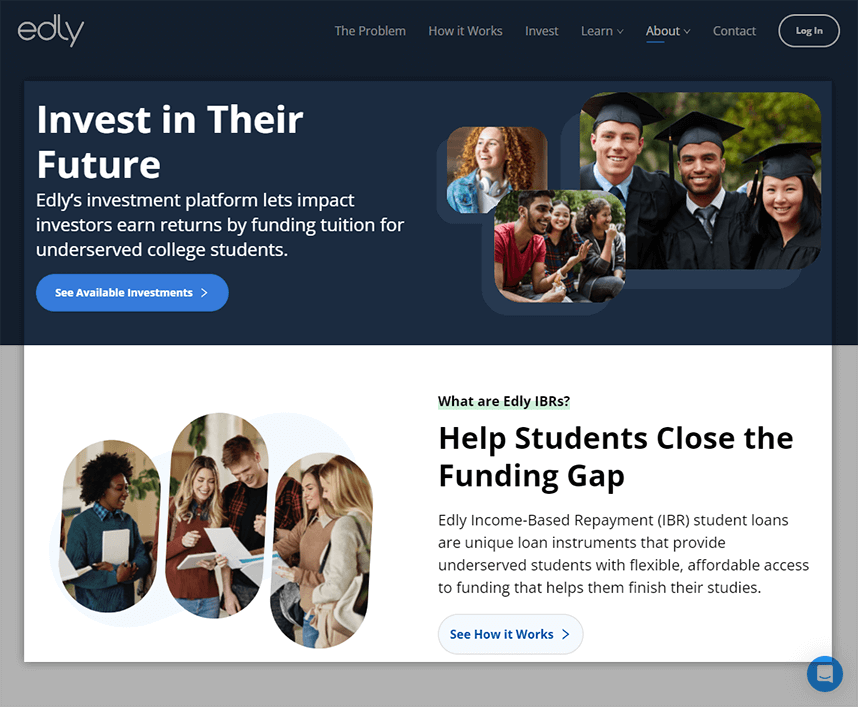 [su_note note_color="#dbeafc"]
Upfront time investment: Low
Upfront financial investment: $5,000 minimum
Passive income potential: 12% of investment
[/su_note]
If you are an accredited investor, you can invest in the future by helping promising students go to college. Loan them money, wait a year, then earn interest by getting a percentage of their future income. You can use sites like these to get started:
Pros:
[su_note note_color="#dbeafc"]
Upfront time investment: Low
Upfront financial investment: $5,000 minimum
Passive income potential: 12% of investment
[/su_note]
If you are an accredited investor, you can invest in the future by helping promising students go to college. Loan them money, wait a year, then earn interest by getting a percentage of their future income. You can use sites like these to get started:
Pros:
 [su_note note_color="#dbeafc"]
Upfront time investment: Low
Upfront financial investment: Your choice
Passive income potential: up to 20% of investment
[/su_note]
This section is solely the opinion of the author and does not represent the beliefs of UpFlip, its owners, or any other members of the team.
Personally, I enjoy the crypto and NFT markets for high liquidity and income generation. They are highly volatile, which means you can trade them for quick 20% gains, but you can also hold them or provide the resources to operate the network. The safest of these investments to invest in are BTC and ETH, but both have been known to skyrocket or plummet more than 20% in a day.
If you invest in any crypto, understand that you do so at your own risk. These investments are unregulated, and you are effectively going into private equity without the regulatory environment that protects accredited investors. That said, my personal favorite projects are:
[su_note note_color="#dbeafc"]
Upfront time investment: Low
Upfront financial investment: Your choice
Passive income potential: up to 20% of investment
[/su_note]
This section is solely the opinion of the author and does not represent the beliefs of UpFlip, its owners, or any other members of the team.
Personally, I enjoy the crypto and NFT markets for high liquidity and income generation. They are highly volatile, which means you can trade them for quick 20% gains, but you can also hold them or provide the resources to operate the network. The safest of these investments to invest in are BTC and ETH, but both have been known to skyrocket or plummet more than 20% in a day.
If you invest in any crypto, understand that you do so at your own risk. These investments are unregulated, and you are effectively going into private equity without the regulatory environment that protects accredited investors. That said, my personal favorite projects are:
 [su_note note_color="#dbeafc"]
Upfront time investment: Medium
Upfront financial investment: Low to none
Passive income potential: 15%-45% of sales ($.05-$.25 per image per month on average)
[/su_note]
If you love photography but want to avoid taking on clients, stock photos might be your answer. Stock photos are used by businesses for marketing purposes. You take pictures of in-demand products and post them on the site with keywords that describe them. Then companies pay to use them.
There are a variety of sites that you can use to earn a passive income stream, but Getty Images is the leader in this market. You can earn up to 45% on each image used, which converts to $.015 and up.
Other stock photo websites have different rates, but Getty sells approximately $1 billion of stock photos, graphics, and videos each year.
Pros:
[su_note note_color="#dbeafc"]
Upfront time investment: Medium
Upfront financial investment: Low to none
Passive income potential: 15%-45% of sales ($.05-$.25 per image per month on average)
[/su_note]
If you love photography but want to avoid taking on clients, stock photos might be your answer. Stock photos are used by businesses for marketing purposes. You take pictures of in-demand products and post them on the site with keywords that describe them. Then companies pay to use them.
There are a variety of sites that you can use to earn a passive income stream, but Getty Images is the leader in this market. You can earn up to 45% on each image used, which converts to $.015 and up.
Other stock photo websites have different rates, but Getty sells approximately $1 billion of stock photos, graphics, and videos each year.
Pros:
 [su_note note_color="#dbeafc"]
Upfront time investment: High
Upfront financial investment: $0
Passive income potential: 35%-70% royalties
[/su_note]
E-books are another great way you can make a passive income from your upfront time investment. Publishing has always been challenging, but now tools like AI copywriters and Audible make it where you can get in front of billions of potential customers without printing a single page.
Graham told us:
[su_quote]I wrote a book called How to Get Paid for What You Know.[/su_quote]
Download it on Audible for more advice on how to earn a passive income from e-books and online courses.
Pros:
[su_note note_color="#dbeafc"]
Upfront time investment: High
Upfront financial investment: $0
Passive income potential: 35%-70% royalties
[/su_note]
E-books are another great way you can make a passive income from your upfront time investment. Publishing has always been challenging, but now tools like AI copywriters and Audible make it where you can get in front of billions of potential customers without printing a single page.
Graham told us:
[su_quote]I wrote a book called How to Get Paid for What You Know.[/su_quote]
Download it on Audible for more advice on how to earn a passive income from e-books and online courses.
Pros:
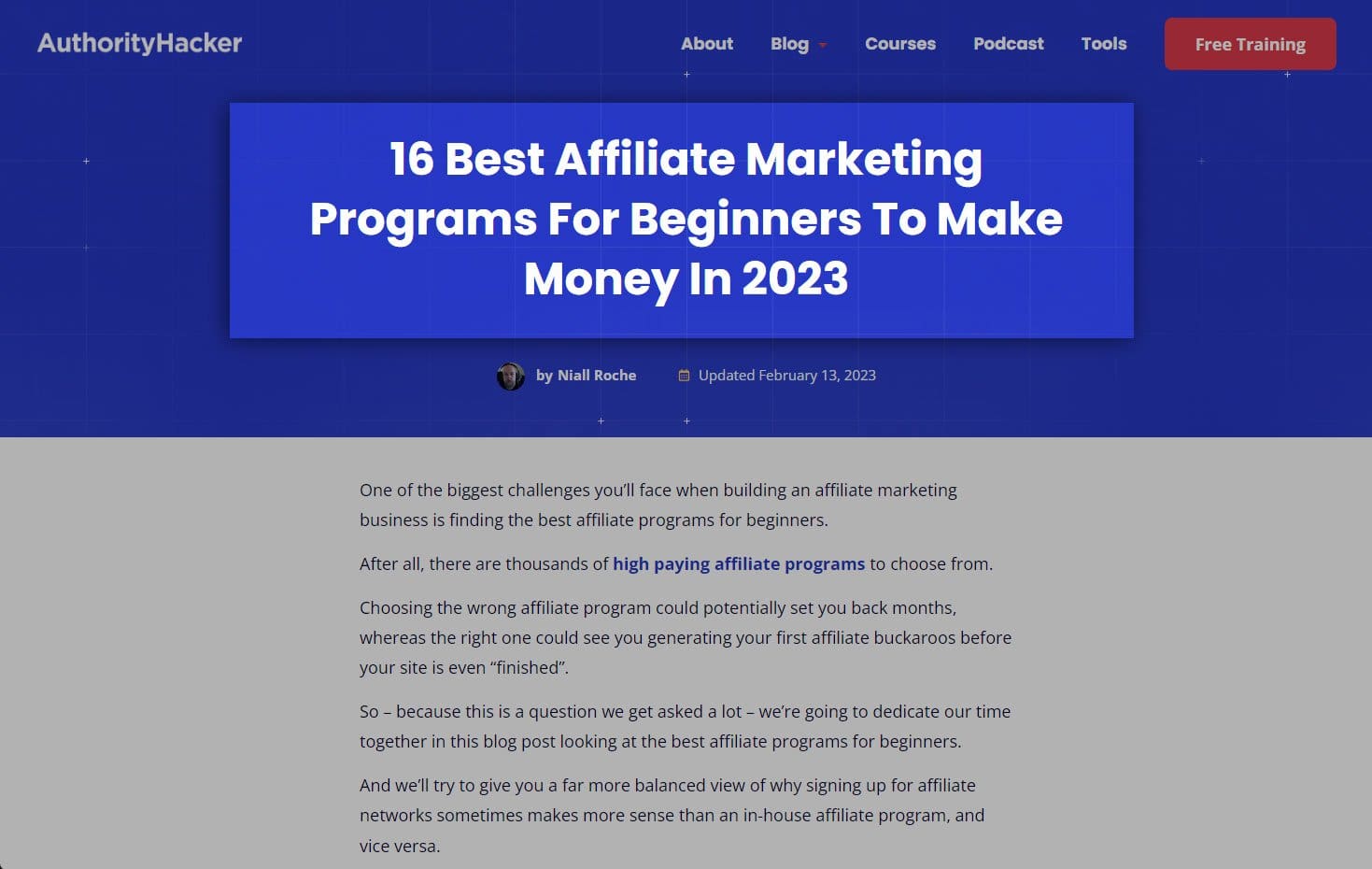 [su_note note_color="#dbeafc"]
Upfront time investment: Medium
Upfront financial investment: Low ($50-$500)
Passive income potential: $1,000-$100K+ per month
[/su_note]
Another way to create a passive income is to create an affiliate marketing business. You can easily get links for most software companies and start adding passive income streams by reviewing the software you use everyday.You'll be adding value for the people following you while you gain passive income.
Many affiliate programs can make thousands or millions from a few hours of work. Check out some of the best affiliate programs of 2024 or listen to our interview with Matt Diggity to learn more about affiliate marketing.
Pros:
[su_note note_color="#dbeafc"]
Upfront time investment: Medium
Upfront financial investment: Low ($50-$500)
Passive income potential: $1,000-$100K+ per month
[/su_note]
Another way to create a passive income is to create an affiliate marketing business. You can easily get links for most software companies and start adding passive income streams by reviewing the software you use everyday.You'll be adding value for the people following you while you gain passive income.
Many affiliate programs can make thousands or millions from a few hours of work. Check out some of the best affiliate programs of 2024 or listen to our interview with Matt Diggity to learn more about affiliate marketing.
Pros:
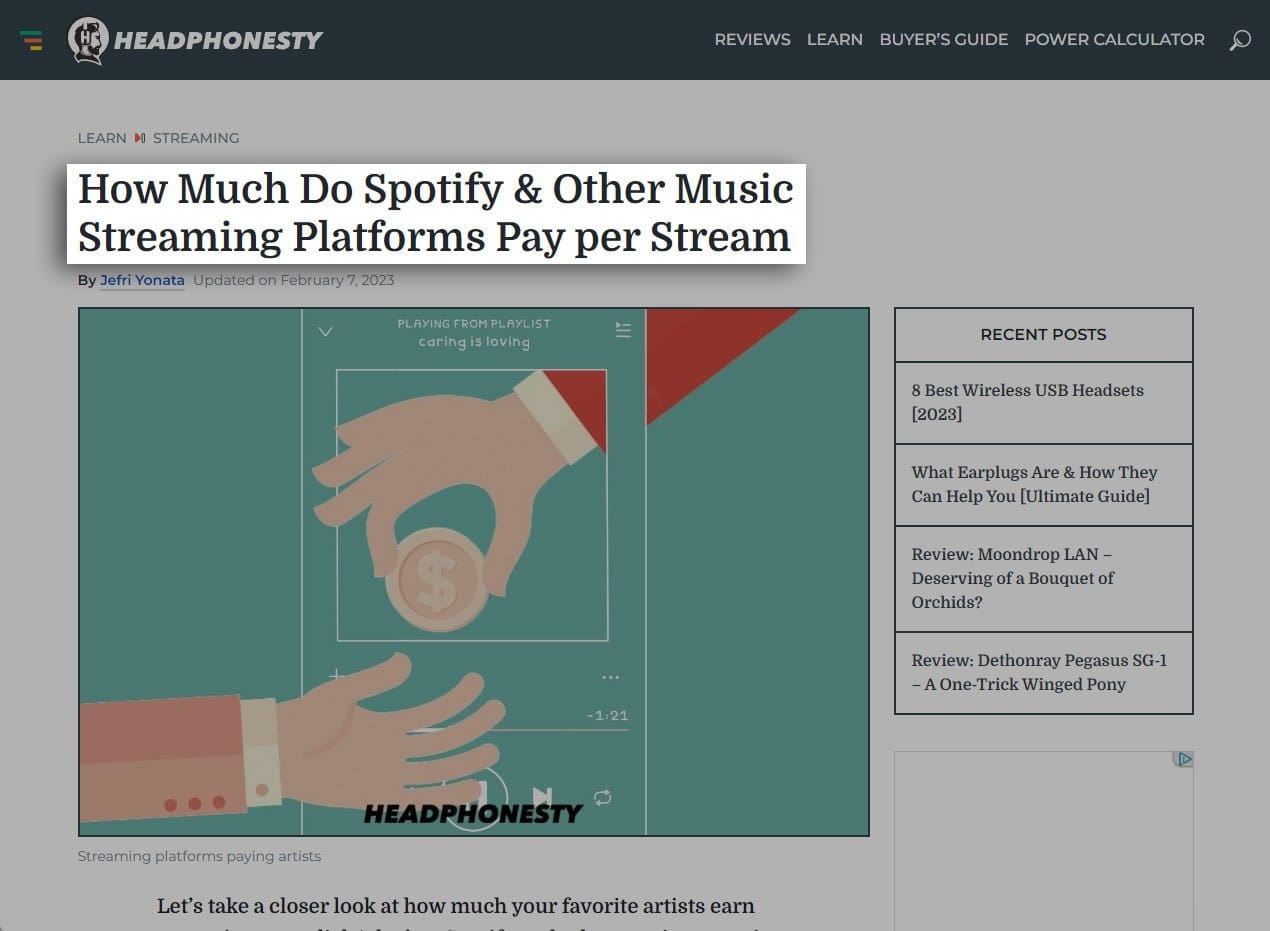 [su_note note_color="#dbeafc"]
Upfront time investment: High
Upfront financial investment: $0
Passive income potential: 40%-60% of streaming revenue
[/su_note]
If you're a musician or want to help musicians earn a living, you can earn a passive income from licensing your music to movies, streaming services, and businesses. You get paid every time someone plays the song. You can find out how to make passive income online through different streaming platforms.
Pros:
[su_note note_color="#dbeafc"]
Upfront time investment: High
Upfront financial investment: $0
Passive income potential: 40%-60% of streaming revenue
[/su_note]
If you're a musician or want to help musicians earn a living, you can earn a passive income from licensing your music to movies, streaming services, and businesses. You get paid every time someone plays the song. You can find out how to make passive income online through different streaming platforms.
Pros:
 [su_note note_color="#dbeafc"]
Upfront time investment: High
Upfront financial investment: $0
Passive income potential: $800-$1,400 per month
[/su_note]
Blogging and YouTube channels are passive income ideas that require similar skill sets. You'll need to provide useful information, optimize it for search results, and share it. Sure, the equipment is different, but either option can make you a ton of extra money. It’s quite easy to create a YouTube channel.
Pros:
[su_note note_color="#dbeafc"]
Upfront time investment: High
Upfront financial investment: $0
Passive income potential: $800-$1,400 per month
[/su_note]
Blogging and YouTube channels are passive income ideas that require similar skill sets. You'll need to provide useful information, optimize it for search results, and share it. Sure, the equipment is different, but either option can make you a ton of extra money. It’s quite easy to create a YouTube channel.
Pros:
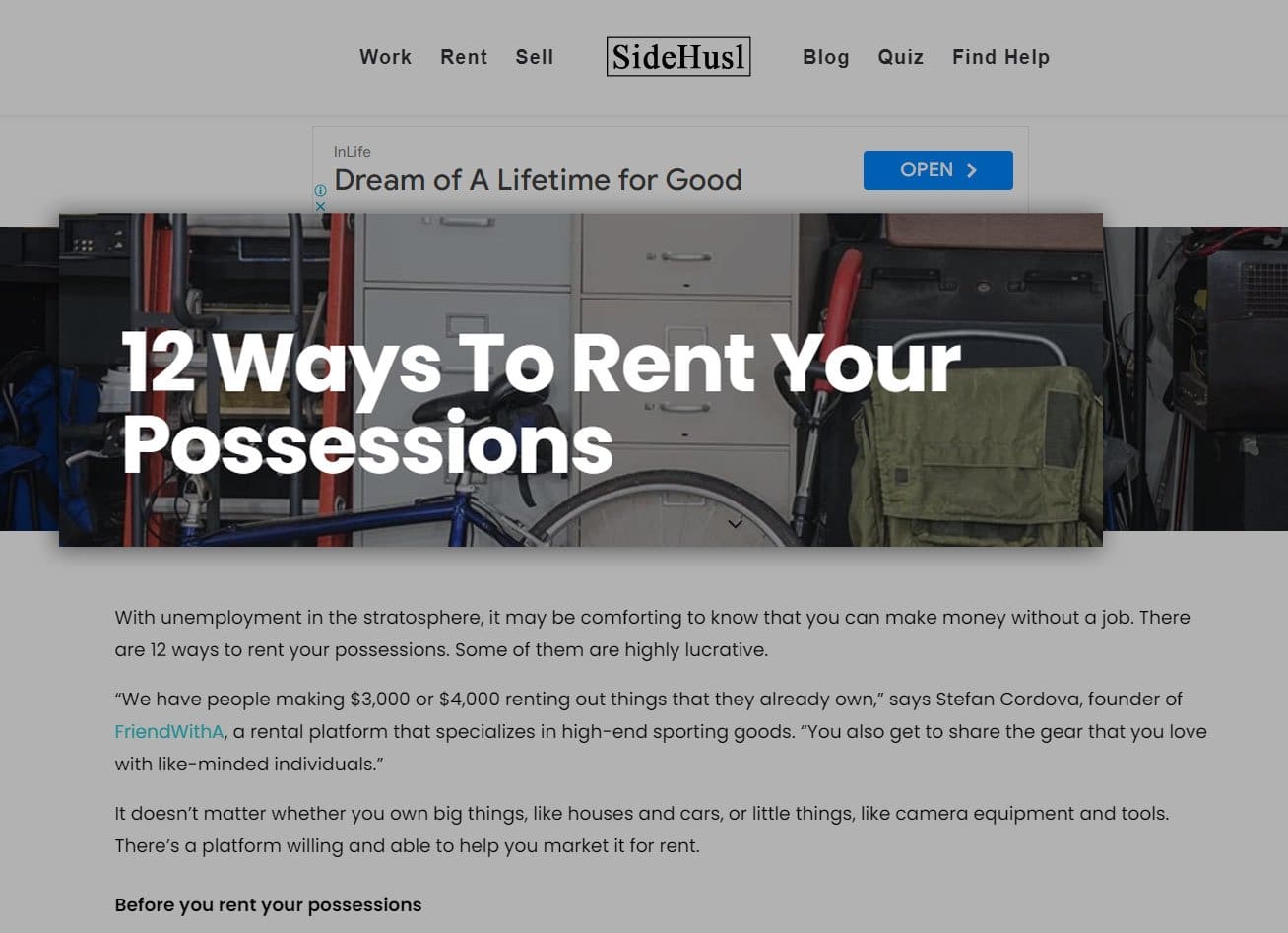 [su_note note_color="#dbeafc"]
Upfront time investment: Low
Upfront financial investment: $0
Passive income potential: Medium (up to $4,000 per month)
[/su_note]
If you have tools or other useful household items, you can rent them out to other people using a variety of sites. Check out sidehusl’s blog for a list of sites to rent specific items.
Pros:
[su_note note_color="#dbeafc"]
Upfront time investment: Low
Upfront financial investment: $0
Passive income potential: Medium (up to $4,000 per month)
[/su_note]
If you have tools or other useful household items, you can rent them out to other people using a variety of sites. Check out sidehusl’s blog for a list of sites to rent specific items.
Pros:
 [su_note note_color="#dbeafc"]
Upfront time investment: Low
Upfront financial investment: $10-$200+ per site
Passive income potential: High
[/su_note]
Did you know that buying a website and selling it could make you up to $90 million?
That's how much Vegas.com paid to purchase LasVegas.com. If you find a website that you can imagine being a desired domain name, buy it and save it until a company is willing to pay way more for it.
You can monetize those websites while you own them, too. Rob Stefanski currently owns seven websites that generate about $30,000 every month in revenue. You can listen to his podcast interview to hear his insights on how to buy, grow, and scale revenue for a website.
Pros:
[su_note note_color="#dbeafc"]
Upfront time investment: Low
Upfront financial investment: $10-$200+ per site
Passive income potential: High
[/su_note]
Did you know that buying a website and selling it could make you up to $90 million?
That's how much Vegas.com paid to purchase LasVegas.com. If you find a website that you can imagine being a desired domain name, buy it and save it until a company is willing to pay way more for it.
You can monetize those websites while you own them, too. Rob Stefanski currently owns seven websites that generate about $30,000 every month in revenue. You can listen to his podcast interview to hear his insights on how to buy, grow, and scale revenue for a website.
Pros:
 [su_note note_color="#dbeafc"]
Upfront time investment: Medium
Upfront financial investment: $2,000-$120,000
Passive income potential: High ($10K+ per month)
[/su_note]
Vending machines are another source of income. For those wondering how to create passive income from vending machines, check out our vending machine business course taught by Adam Hill, who turned an investment of $120K into $600K of annual revenue.
Insert sign up for the Vending Machine Boot camp.
Pros:
[su_note note_color="#dbeafc"]
Upfront time investment: Medium
Upfront financial investment: $2,000-$120,000
Passive income potential: High ($10K+ per month)
[/su_note]
Vending machines are another source of income. For those wondering how to create passive income from vending machines, check out our vending machine business course taught by Adam Hill, who turned an investment of $120K into $600K of annual revenue.
Insert sign up for the Vending Machine Boot camp.
Pros:
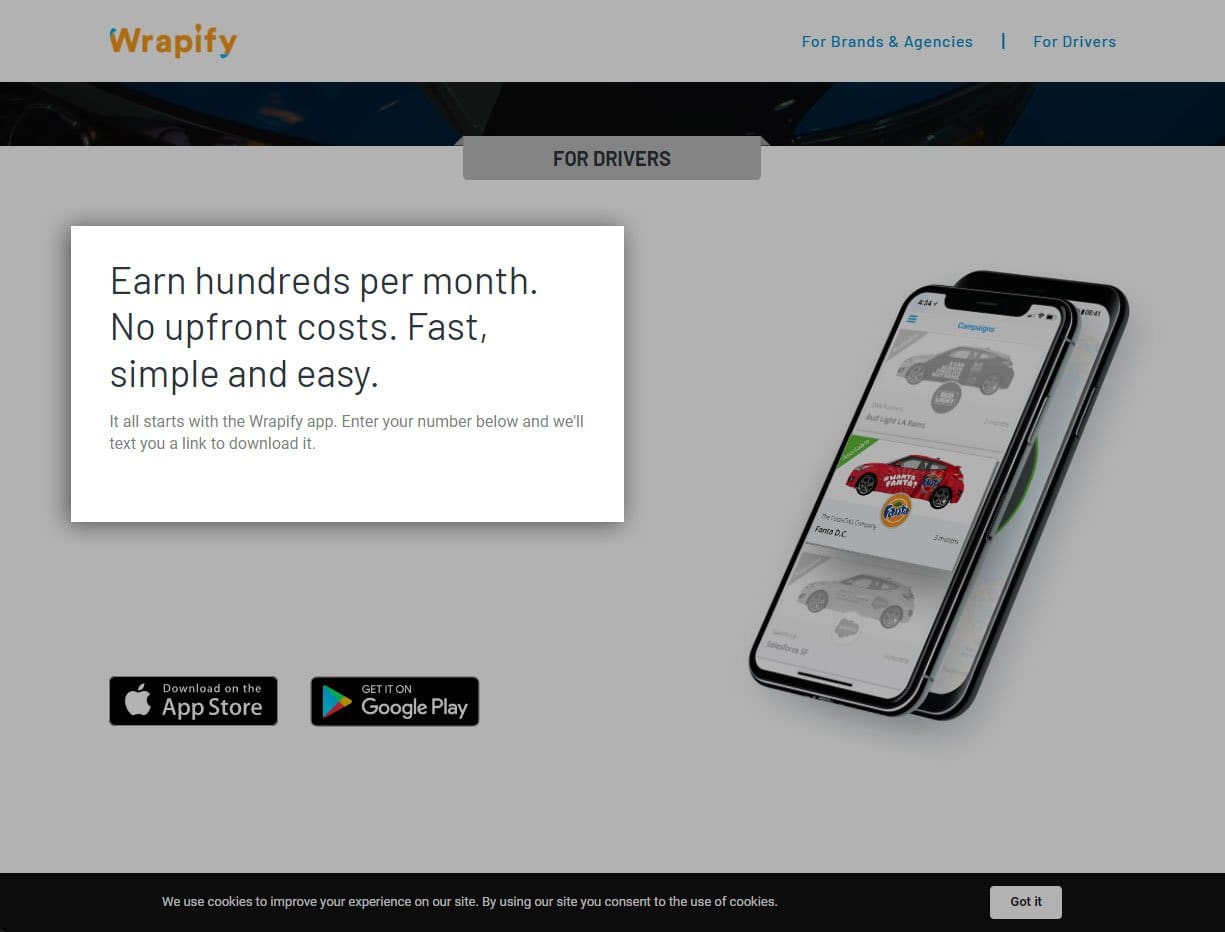 [su_note note_color="#dbeafc"]
Upfront time investment: Low
Upfront financial investment: $0
Passive income potential: $100-$900 per month
[/su_note]
Your car can be a source of multiple streams of income. You can advertise your own businesses or earn easy passive income by advertising other brands. Some providers to check out include:
[su_note note_color="#dbeafc"]
Upfront time investment: Low
Upfront financial investment: $0
Passive income potential: $100-$900 per month
[/su_note]
Your car can be a source of multiple streams of income. You can advertise your own businesses or earn easy passive income by advertising other brands. Some providers to check out include:
 [su_note note_color="#dbeafc"]
Upfront time investment: Low
Upfront financial investment: Your choice
Passive income potential: 2.91%-6.1% of investment
[/su_note]
Robo-advisors are apps that automatically pick investments and manage your portfolio. All you do is answer a few questions about your risk tolerance and investment goals, and their algorithms take care of the rest. Credit Donkey’s list of the best robo advisors is a great place to start if you’re looking for more information.
Pros:
[su_note note_color="#dbeafc"]
Upfront time investment: Low
Upfront financial investment: Your choice
Passive income potential: 2.91%-6.1% of investment
[/su_note]
Robo-advisors are apps that automatically pick investments and manage your portfolio. All you do is answer a few questions about your risk tolerance and investment goals, and their algorithms take care of the rest. Credit Donkey’s list of the best robo advisors is a great place to start if you’re looking for more information.
Pros:
 [su_note note_color="#dbeafc"]
Upfront time investment: Medium
Upfront financial investment: up to $1,000 for initial inventory
Passive income potential: High ($30K+ per month)
[/su_note]
The old adage that one man’s trash is another man’s treasure is true and can be a great way to earn income if you have a sharp eye for products that will sell.
Mike Wilson’s story is a prime example. He started an eBay store to resell items after retiring from his career as a furniture store owner. After investing $1,000 into his initial inventory, he now makes around $30,000 every month with his eBay store. Hear more about how Mike built his online store in his podcast interview.
You can find items to resell for cheap at thrift stores, garage sales, or storage unit auctions. Sites like Craigslist and Facebook’s marketplace sometimes even have free items available, or you could sell unused items from around your home. While you will need to invest some time into acquiring your inventory, it’ll be on your schedule, and the income is still primarily passive.
Pros:
[su_note note_color="#dbeafc"]
Upfront time investment: Medium
Upfront financial investment: up to $1,000 for initial inventory
Passive income potential: High ($30K+ per month)
[/su_note]
The old adage that one man’s trash is another man’s treasure is true and can be a great way to earn income if you have a sharp eye for products that will sell.
Mike Wilson’s story is a prime example. He started an eBay store to resell items after retiring from his career as a furniture store owner. After investing $1,000 into his initial inventory, he now makes around $30,000 every month with his eBay store. Hear more about how Mike built his online store in his podcast interview.
You can find items to resell for cheap at thrift stores, garage sales, or storage unit auctions. Sites like Craigslist and Facebook’s marketplace sometimes even have free items available, or you could sell unused items from around your home. While you will need to invest some time into acquiring your inventory, it’ll be on your schedule, and the income is still primarily passive.
Pros:
 [su_note note_color="#dbeafc"]
Upfront time investment: Low
Upfront financial investment: Your choice
Passive income potential: .15%-5% of investment
[/su_note]
A Certificate of Deposit (CD) is a savings product sold by banks, credit unions, and other financial institutions. The main difference between CDs and savings accounts is that CDs have a fixed term and interest rate.
CD laddering is an approach to maintain your liquidity while investing in CDs. Basically, you invest in a few different CDs with varying terms. As each matures, you can choose whether to keep that money or reinvest it into a new CD. These investments are insured by the FDIC so your principal is protected, a key advantage over more volatile forms of investment.
Pros:
[su_note note_color="#dbeafc"]
Upfront time investment: Low
Upfront financial investment: Your choice
Passive income potential: .15%-5% of investment
[/su_note]
A Certificate of Deposit (CD) is a savings product sold by banks, credit unions, and other financial institutions. The main difference between CDs and savings accounts is that CDs have a fixed term and interest rate.
CD laddering is an approach to maintain your liquidity while investing in CDs. Basically, you invest in a few different CDs with varying terms. As each matures, you can choose whether to keep that money or reinvest it into a new CD. These investments are insured by the FDIC so your principal is protected, a key advantage over more volatile forms of investment.
Pros:
 [su_note note_color="#dbeafc"]
Upfront time investment: Low
Upfront financial investment: $20 minimum
Passive income potential: 15% of investment
[/su_note]
KickFurther.com is a unique concept in crowdsourced small business financing. Business owners sign up for funding, and investors provide those funds by essentially buying their inventory and selling it through them on consignment. Your profit is earned once the products sell. Kickfurther sellers also get their own store on the site where you can help sell the inventory you purchased and get an extra 5% commission on any items sold through it.
Pros:
[su_note note_color="#dbeafc"]
Upfront time investment: Low
Upfront financial investment: $20 minimum
Passive income potential: 15% of investment
[/su_note]
KickFurther.com is a unique concept in crowdsourced small business financing. Business owners sign up for funding, and investors provide those funds by essentially buying their inventory and selling it through them on consignment. Your profit is earned once the products sell. Kickfurther sellers also get their own store on the site where you can help sell the inventory you purchased and get an extra 5% commission on any items sold through it.
Pros:
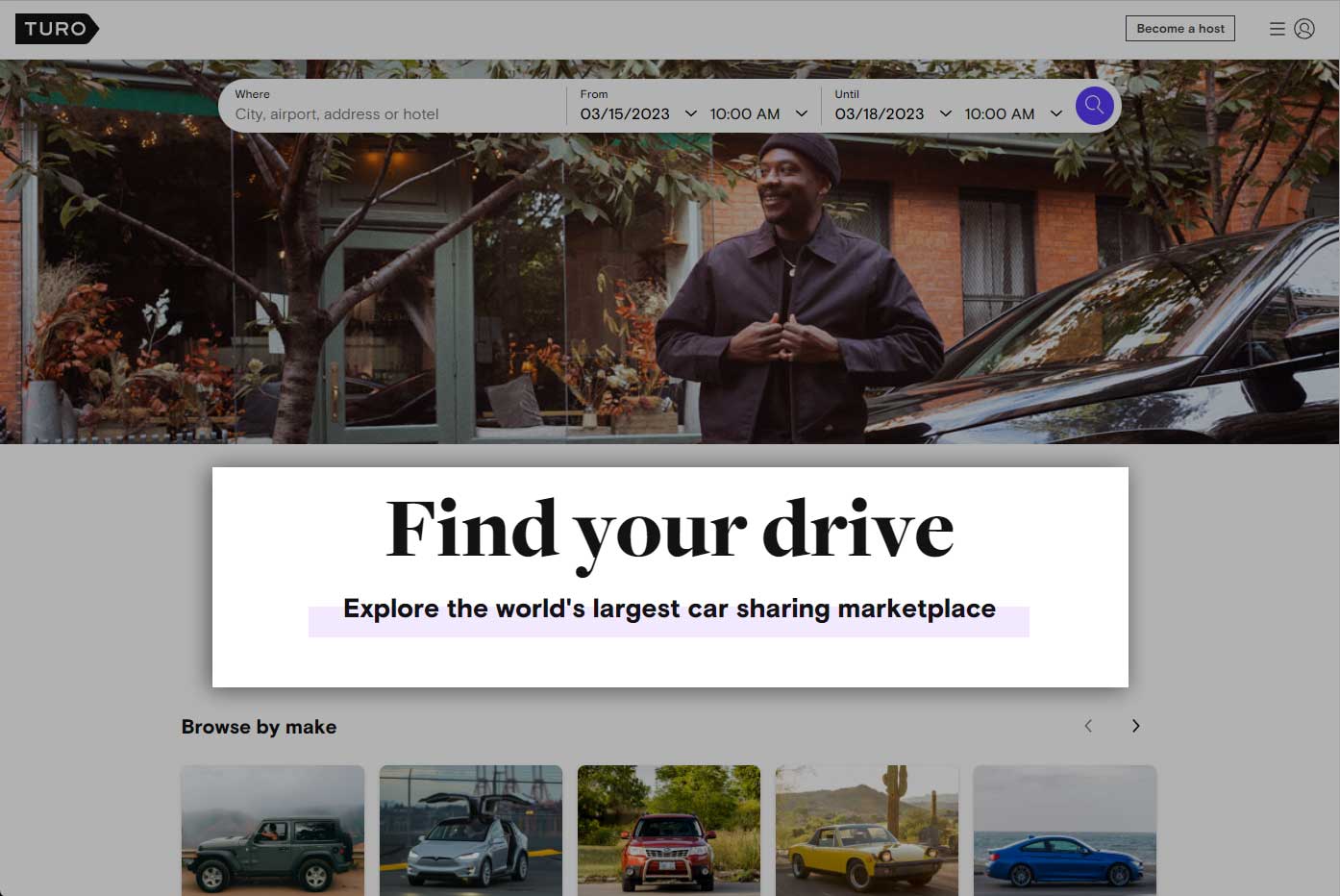 [su_note note_color="#dbeafc"]
Upfront time investment: Low
Upfront financial investment: $0
Passive income potential: $850-$7,500+ per month
[/su_note]
The website Turo uses a similar model to vacation rental sites like Airbnb, but with cars instead of homes. Hosts list their cars on the site and travelers who need a vehicle reserve them for a fee. You can host one car or several, making it a scalable passive income source for those who want something they can grow to replace a full-time job.
While there is some risk of your car being damaged while someone’s using it, Turo provides liability insurance coverage up to $750,000, so you won’t be on the hook for repairs if they do.
There are other places you can rent out your car, too:
[su_note note_color="#dbeafc"]
Upfront time investment: Low
Upfront financial investment: $0
Passive income potential: $850-$7,500+ per month
[/su_note]
The website Turo uses a similar model to vacation rental sites like Airbnb, but with cars instead of homes. Hosts list their cars on the site and travelers who need a vehicle reserve them for a fee. You can host one car or several, making it a scalable passive income source for those who want something they can grow to replace a full-time job.
While there is some risk of your car being damaged while someone’s using it, Turo provides liability insurance coverage up to $750,000, so you won’t be on the hook for repairs if they do.
There are other places you can rent out your car, too:
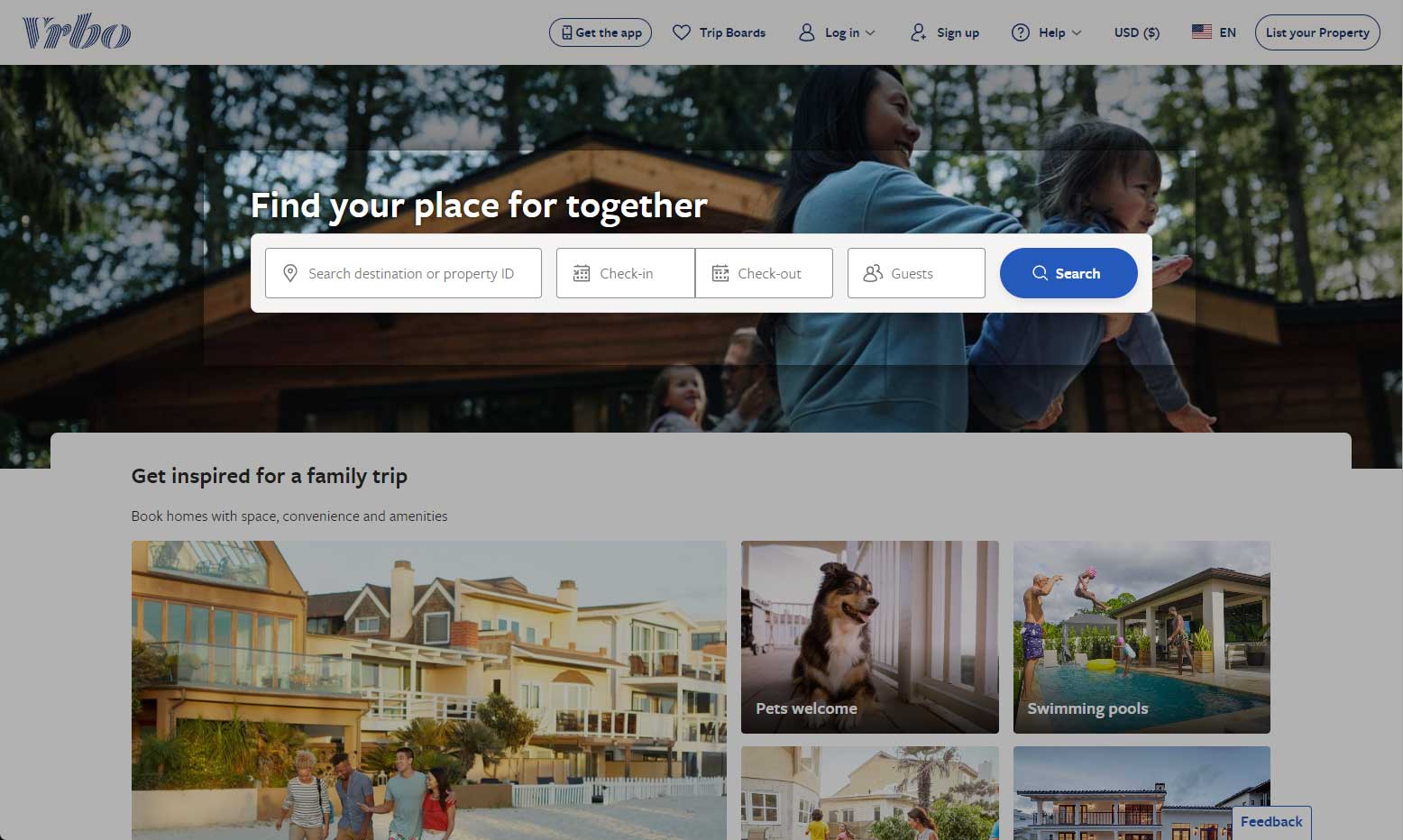 [su_note note_color="#dbeafc"]
Upfront time investment: Low to Medium
Upfront financial investment: $0
Passive income potential: $50-$1,500+ per month
[/su_note]
There are a few different ways you can go about this. If you have an unused vacation home, extra rooms in your main home, or under-utilized spaces like a garage or pool house you can turn into a micro-apartment, you can rent it out to travelers on sites like Airbnb or Vrbo.
Travelers aren’t the only people who need to rent space, either. On Neighbor, you can rent out space storage space, whether that’s interior storage for people’s possessions or business inventory, or an outdoor lot where people can park cars, boats, RVs, and trailers.
This is a great option for homeowners who have extra space in an attic, garage, basement, or unused room but don’t want to worry about preparing that space for other people to inhabit.
Pros:
[su_note note_color="#dbeafc"]
Upfront time investment: Low to Medium
Upfront financial investment: $0
Passive income potential: $50-$1,500+ per month
[/su_note]
There are a few different ways you can go about this. If you have an unused vacation home, extra rooms in your main home, or under-utilized spaces like a garage or pool house you can turn into a micro-apartment, you can rent it out to travelers on sites like Airbnb or Vrbo.
Travelers aren’t the only people who need to rent space, either. On Neighbor, you can rent out space storage space, whether that’s interior storage for people’s possessions or business inventory, or an outdoor lot where people can park cars, boats, RVs, and trailers.
This is a great option for homeowners who have extra space in an attic, garage, basement, or unused room but don’t want to worry about preparing that space for other people to inhabit.
Pros:
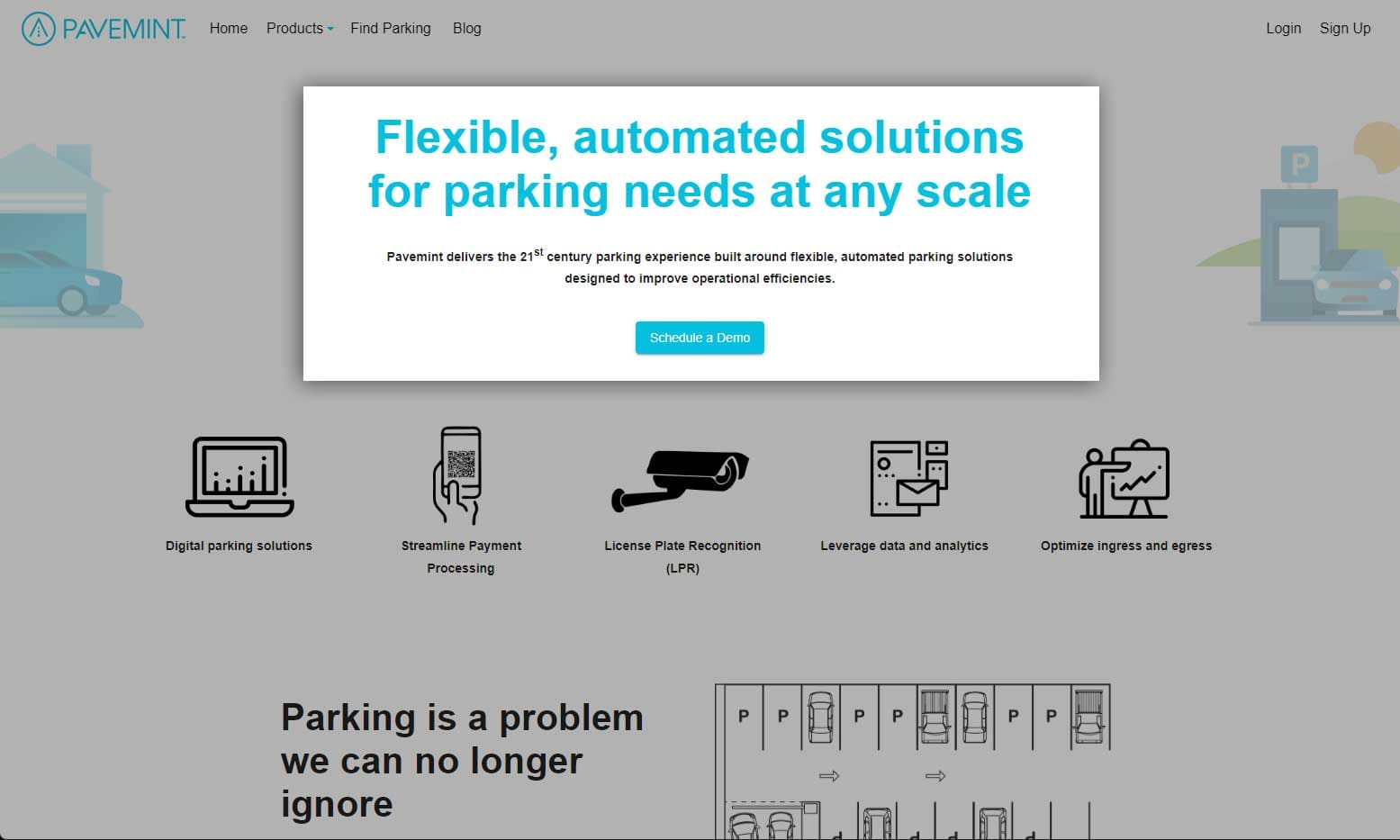 [su_note note_color="#dbeafc"]
Upfront time investment: Low
Upfront financial investment: $0
Passive income potential: $50-$300 per month
[/su_note]
If you live in an urban area, especially close to a place where people congregate like a sports venue, fairground, or other event space, you can monetize your parking space for a bit of extra income. Apps like Pavemint and CurbFlip make this easy. All you have to do is list your space and drivers reserve and pay for it right through the app.
Pros:
[su_note note_color="#dbeafc"]
Upfront time investment: Low
Upfront financial investment: $0
Passive income potential: $50-$300 per month
[/su_note]
If you live in an urban area, especially close to a place where people congregate like a sports venue, fairground, or other event space, you can monetize your parking space for a bit of extra income. Apps like Pavemint and CurbFlip make this easy. All you have to do is list your space and drivers reserve and pay for it right through the app.
Pros:
 [su_note note_color="#dbeafc"]
Upfront time investment: Medium-High
Upfront financial investment: $200,000+
Passive income potential: High ($24K+ per month)
[/su_note]
Everyone needs to do their laundry, and not everyone has a machine to do it at home. Everything in a coin-op laundromat is automated, and it’s common for them to operate without employees on-site to supervise. If you hire someone to clean and maintain the machines it’s a completely passive business, and that won’t be much of a time commitment if you handle it yourself.
Like any brick-and-mortar business, a laundromat can be a big investment. Brian Riseland invested $1 million to open Laundry Genius (watch his YouTube interview).
[su_youtube url="https://www.youtube.com/watch?v=0aEcWTxnLUI"]
Note that his space is larger than most, which means higher revenue potential. While you don’t necessarily need to make a 7-figure investment, it’s common for turnkey laundromat operations to cost between $200,000 and $500,000.
If you’re interested in opening a laundromat, the how-to guide on the UpFlip blog is a great place to get more info.
Pros:
[su_note note_color="#dbeafc"]
Upfront time investment: Medium-High
Upfront financial investment: $200,000+
Passive income potential: High ($24K+ per month)
[/su_note]
Everyone needs to do their laundry, and not everyone has a machine to do it at home. Everything in a coin-op laundromat is automated, and it’s common for them to operate without employees on-site to supervise. If you hire someone to clean and maintain the machines it’s a completely passive business, and that won’t be much of a time commitment if you handle it yourself.
Like any brick-and-mortar business, a laundromat can be a big investment. Brian Riseland invested $1 million to open Laundry Genius (watch his YouTube interview).
[su_youtube url="https://www.youtube.com/watch?v=0aEcWTxnLUI"]
Note that his space is larger than most, which means higher revenue potential. While you don’t necessarily need to make a 7-figure investment, it’s common for turnkey laundromat operations to cost between $200,000 and $500,000.
If you’re interested in opening a laundromat, the how-to guide on the UpFlip blog is a great place to get more info.
Pros:
 [su_note note_color="#dbeafc"]
Upfront time investment: Medium
Upfront financial investment: $100-$1,000
Passive income potential: $1,000-$50K+ per month
[/su_note]
Dropshipping is basically like being a professional middleman. You take orders from customers, then send them along to a wholesaler, manufacturer, or other retailer who sends the ordered item to the customer.
The big advantage of dropshipping is that you never have to worry about inventory. All you have to do is list the items in your store and market to potential customers. There are software and tools you can use to automate many of these tasks.
Amazon and Shopify are the two largest platforms for dropshipping businesses. Multi-million dollar Amazon seller Ryan Hogue started his Ryan’s Method Passive Income School based on his success with a dropshipping eCommerce business, and you can hear his advice on how to start in our podcast interview.
Pros:
[su_note note_color="#dbeafc"]
Upfront time investment: Medium
Upfront financial investment: $100-$1,000
Passive income potential: $1,000-$50K+ per month
[/su_note]
Dropshipping is basically like being a professional middleman. You take orders from customers, then send them along to a wholesaler, manufacturer, or other retailer who sends the ordered item to the customer.
The big advantage of dropshipping is that you never have to worry about inventory. All you have to do is list the items in your store and market to potential customers. There are software and tools you can use to automate many of these tasks.
Amazon and Shopify are the two largest platforms for dropshipping businesses. Multi-million dollar Amazon seller Ryan Hogue started his Ryan’s Method Passive Income School based on his success with a dropshipping eCommerce business, and you can hear his advice on how to start in our podcast interview.
Pros:
 [su_note note_color="#dbeafc"]
Upfront time investment: High
Upfront financial investment: $0
Passive income potential: $100-$10K+ per month
[/su_note]
Devices that use Alexa voice control have “skills” that allow them to perform different tasks, like playing music or turning connected devices off and on. Anyone can create the skills and get paid for them. While you will need some software development skills to do so, Amazon has partnered with Codeacademy to create free courses that will teach you the basics.
Payment for skills is based on user engagement. The more popular the skill, the more you can earn from it. Skills can also be monetized by adding in-skill purchases.
Pros:
[su_note note_color="#dbeafc"]
Upfront time investment: High
Upfront financial investment: $0
Passive income potential: $100-$10K+ per month
[/su_note]
Devices that use Alexa voice control have “skills” that allow them to perform different tasks, like playing music or turning connected devices off and on. Anyone can create the skills and get paid for them. While you will need some software development skills to do so, Amazon has partnered with Codeacademy to create free courses that will teach you the basics.
Payment for skills is based on user engagement. The more popular the skill, the more you can earn from it. Skills can also be monetized by adding in-skill purchases.
Pros:
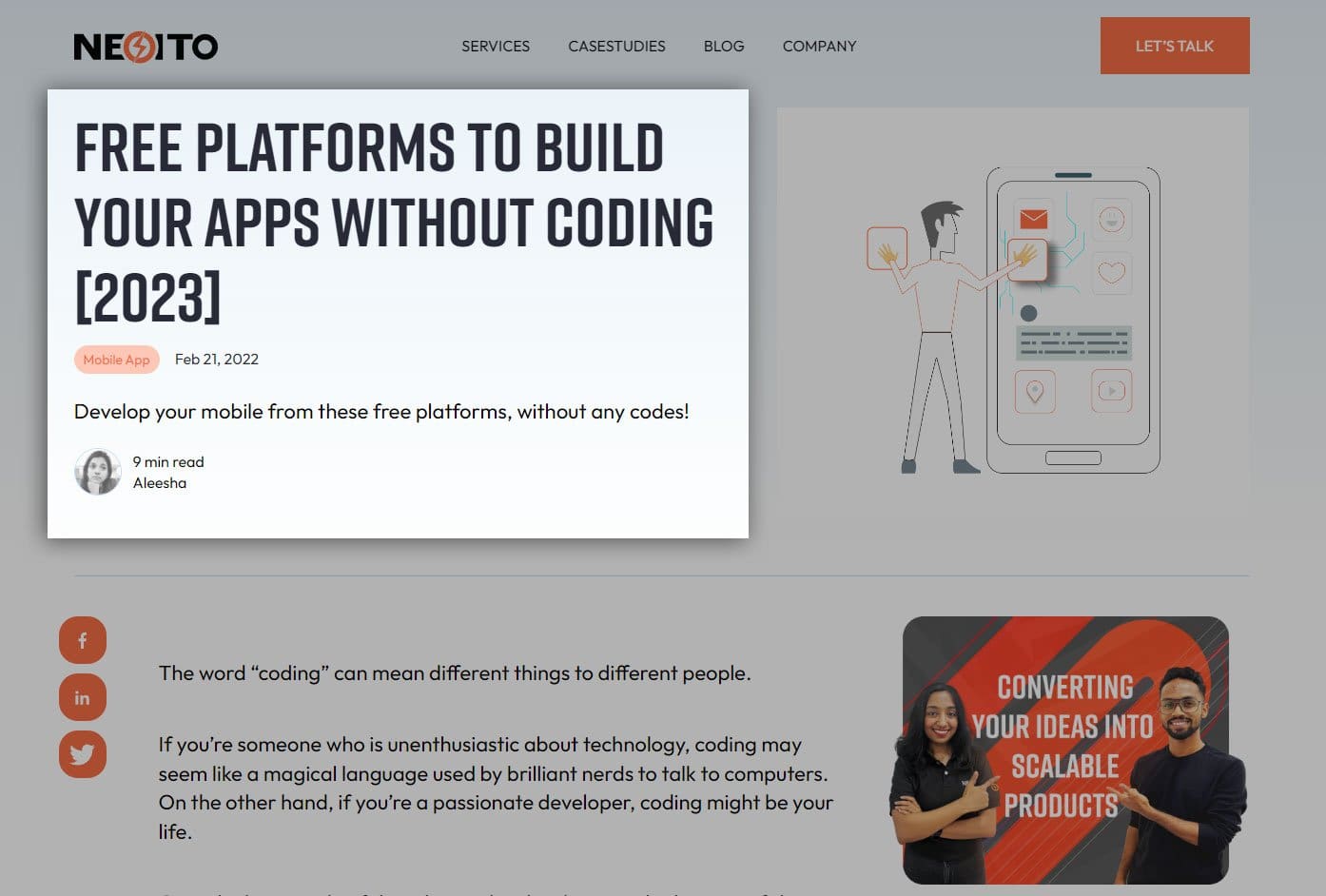 [su_note note_color="#dbeafc"]
Upfront time investment: High
Upfront financial investment: $100-$5,000
Passive income potential: $100-$500 per app per month on average
[/su_note]
Everyone who has a smartphone is a potential customer for mobile apps. If you can solve a problem or make an entertaining game it can quickly get thousands of downloads, even if it’s targeted to a very specific niche.
You don’t need to be a programmer to write an app, either, thanks to low-code and no-code platforms. NeoITO has a list of the best free platforms for non-coders to develop apps if this is something that interests you.
Pros:
[su_note note_color="#dbeafc"]
Upfront time investment: High
Upfront financial investment: $100-$5,000
Passive income potential: $100-$500 per app per month on average
[/su_note]
Everyone who has a smartphone is a potential customer for mobile apps. If you can solve a problem or make an entertaining game it can quickly get thousands of downloads, even if it’s targeted to a very specific niche.
You don’t need to be a programmer to write an app, either, thanks to low-code and no-code platforms. NeoITO has a list of the best free platforms for non-coders to develop apps if this is something that interests you.
Pros:
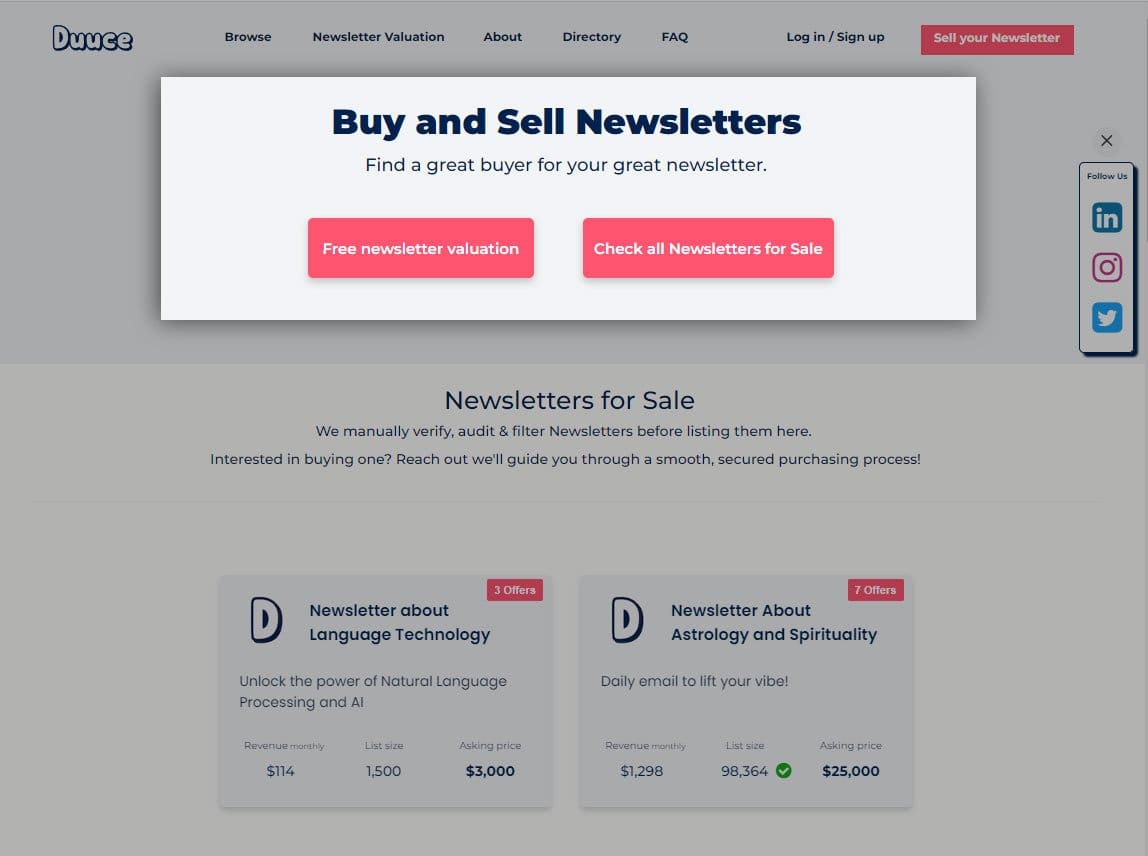 [su_note note_color="#dbeafc"]
Upfront time investment: High
Upfront financial investment: $0
Passive income potential: $5-$10 per subscriber per month
[/su_note]
Subscription-based newsletters can be very lucrative if they provide readers with consistent value. You can also monetize your newsletter by including affiliate links or selling advertising space once you have an established audience.
Like other content-based income streams, it can take a lot of time and hard work to create valuable newsletters and build a subscriber base. If you don’t want to start from scratch, you can buy a newsletter from a marketplace like Duuce.
Pros:
[su_note note_color="#dbeafc"]
Upfront time investment: High
Upfront financial investment: $0
Passive income potential: $5-$10 per subscriber per month
[/su_note]
Subscription-based newsletters can be very lucrative if they provide readers with consistent value. You can also monetize your newsletter by including affiliate links or selling advertising space once you have an established audience.
Like other content-based income streams, it can take a lot of time and hard work to create valuable newsletters and build a subscriber base. If you don’t want to start from scratch, you can buy a newsletter from a marketplace like Duuce.
Pros:
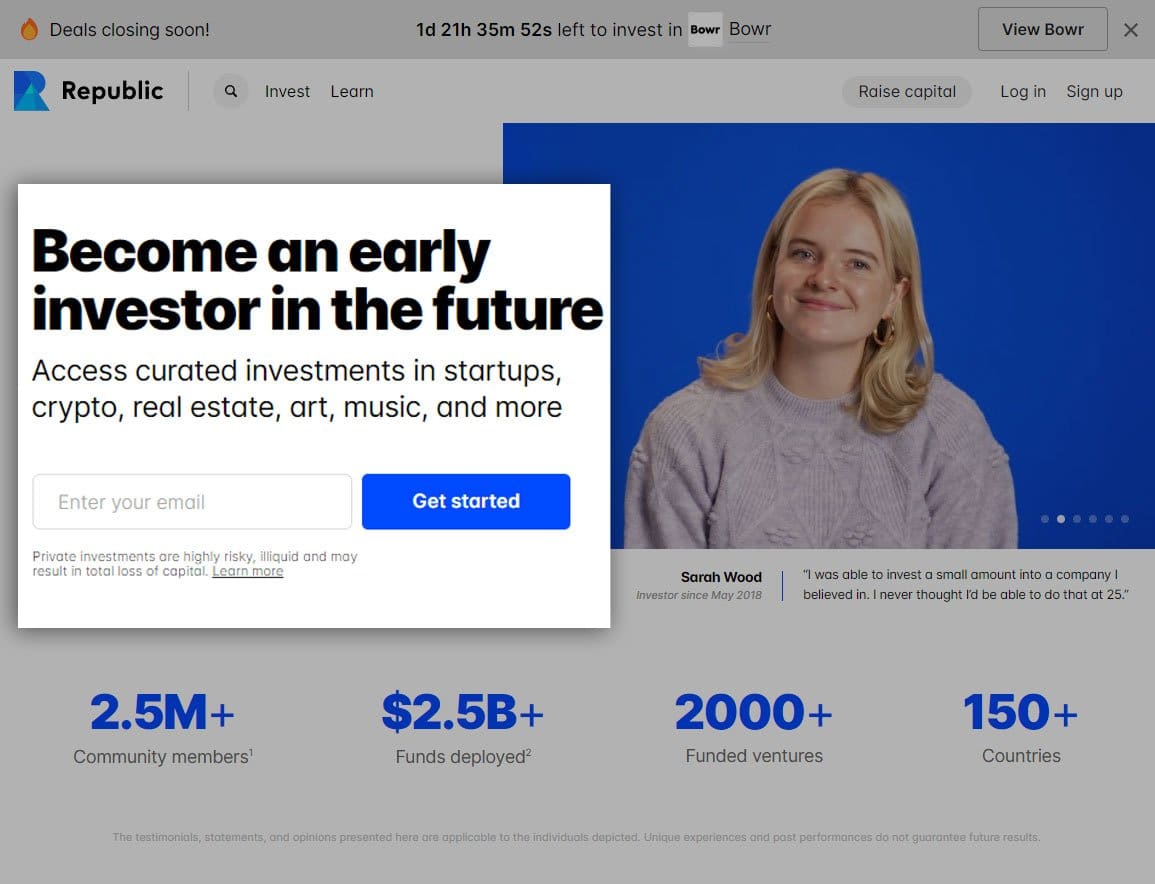 [su_note note_color="#dbeafc"]
Upfront time investment: Low
Upfront financial investment: $50-$500 minimum investment
Passive income potential: 10%-25% of investment
[/su_note]
Lack of capital is one of the biggest challenges many entrepreneurs face when starting a business. Equity crowdfunding is one way for them to access the funds they need, and you don’t need to be an accredited investor to get in on the action.
There are a variety of equity crowdfunding platforms where you can become an angel investor with just a few hundred dollars in capital:
[su_note note_color="#dbeafc"]
Upfront time investment: Low
Upfront financial investment: $50-$500 minimum investment
Passive income potential: 10%-25% of investment
[/su_note]
Lack of capital is one of the biggest challenges many entrepreneurs face when starting a business. Equity crowdfunding is one way for them to access the funds they need, and you don’t need to be an accredited investor to get in on the action.
There are a variety of equity crowdfunding platforms where you can become an angel investor with just a few hundred dollars in capital:
 [su_note note_color="#dbeafc"]
Upfront time investment: Medium-High
Upfront financial investment: $0
Passive income potential: $50-$10K+ per month
[/su_note]
You’ve likely seen the online marketplaces of fonts, website and store themes, and other graphics and illustrations. These are often made by independent artists and designers who can make extra income selling their digital files through a platform like Creative Market.
This isn’t just an option for artists. You can also sell spreadsheet templates, patterns for crafts, PDFs, or templates for business cards, invitations, or greeting cards. If it’s something people need and will search for online, you can sell it for extra income.
Some other sites to check out if this seems like something you want to do:
[su_note note_color="#dbeafc"]
Upfront time investment: Medium-High
Upfront financial investment: $0
Passive income potential: $50-$10K+ per month
[/su_note]
You’ve likely seen the online marketplaces of fonts, website and store themes, and other graphics and illustrations. These are often made by independent artists and designers who can make extra income selling their digital files through a platform like Creative Market.
This isn’t just an option for artists. You can also sell spreadsheet templates, patterns for crafts, PDFs, or templates for business cards, invitations, or greeting cards. If it’s something people need and will search for online, you can sell it for extra income.
Some other sites to check out if this seems like something you want to do:
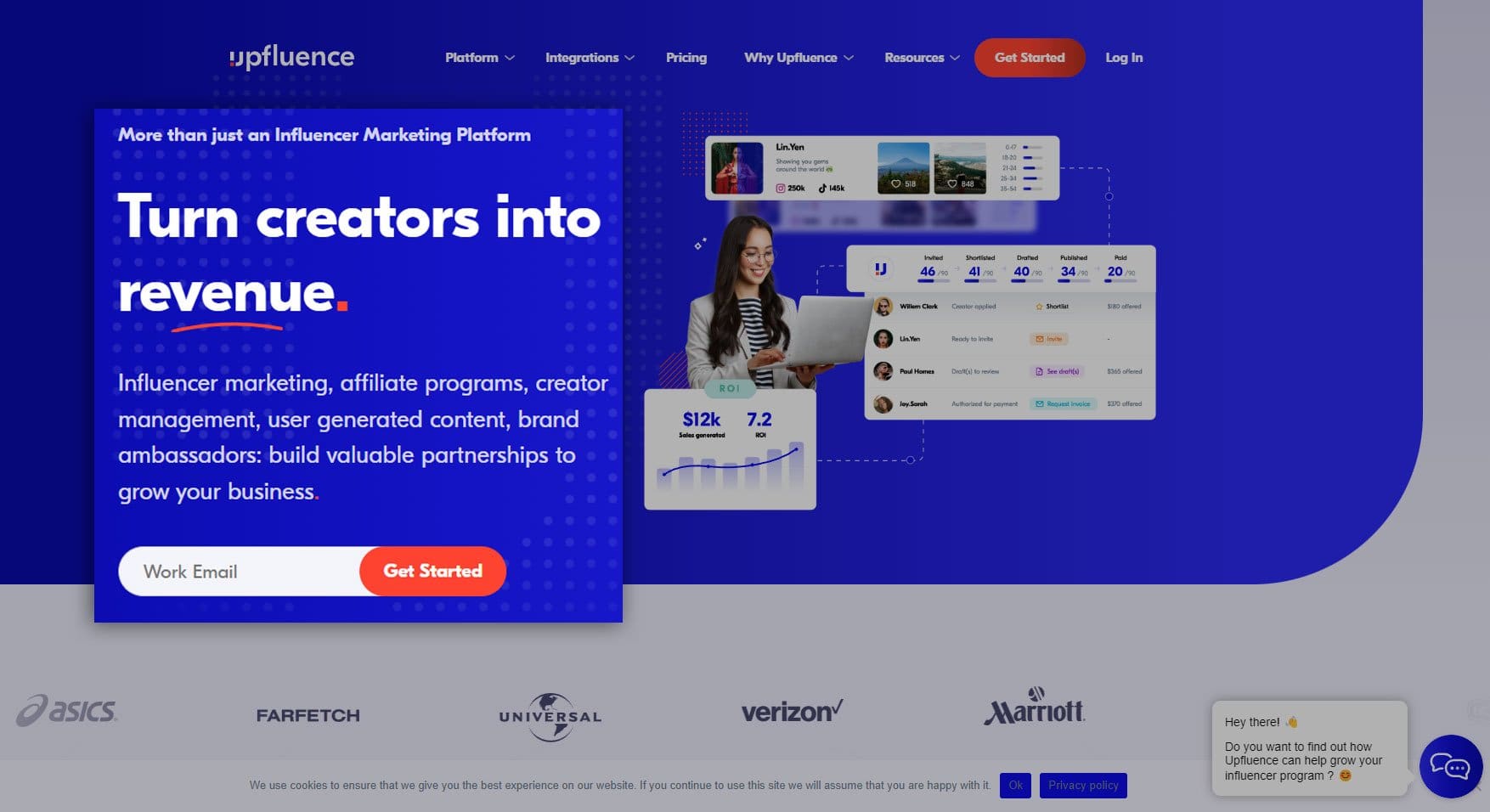 [su_note note_color="#dbeafc"]
Upfront time investment: High
Upfront financial investment: $0
Passive income potential: $10 (<1,000 followers)-$10K (>500,000 followers) per post
[/su_note]
If you’re already active with a large following on social media, you can leverage that following into passive income by becoming an influencer. Influencers are paid to promote products, services, and companies through their social media channels using reviews, promotional posts, or ads inserted into their posts, blogs, and videos.
Sites like Heepsy and Upfluence connect influencers with people who need their services and can help you build your reputation as an influencer. While the highest-paid influencers have 100,000 followers or more, you can become a micro-influencer with as few as 1,000 followers.
Pros:
[su_note note_color="#dbeafc"]
Upfront time investment: High
Upfront financial investment: $0
Passive income potential: $10 (<1,000 followers)-$10K (>500,000 followers) per post
[/su_note]
If you’re already active with a large following on social media, you can leverage that following into passive income by becoming an influencer. Influencers are paid to promote products, services, and companies through their social media channels using reviews, promotional posts, or ads inserted into their posts, blogs, and videos.
Sites like Heepsy and Upfluence connect influencers with people who need their services and can help you build your reputation as an influencer. While the highest-paid influencers have 100,000 followers or more, you can become a micro-influencer with as few as 1,000 followers.
Pros:
 [su_note note_color="#dbeafc"]
Upfront time investment: Medium-High
Upfront financial investment: Low
Passive income potential: $.50-$30 per lead
[/su_note]
A lead is a potential customer or sales contact. Companies get leads through their website, online ads, and ranking high on search results. Larger companies often have teams devoted to lead generation and management, but smaller businesses don’t have those resources, and instead pay third-party freelancers or agencies to do it for them.
If you have a strong understanding of digital marketing, SEO, and web development, you can use those to gather leads and sell them to businesses. The industries that pay the most for these are home services, insurance, and lending companies, so it can be beneficial to have expertise in those areas.
Pros:
[su_note note_color="#dbeafc"]
Upfront time investment: Medium-High
Upfront financial investment: Low
Passive income potential: $.50-$30 per lead
[/su_note]
A lead is a potential customer or sales contact. Companies get leads through their website, online ads, and ranking high on search results. Larger companies often have teams devoted to lead generation and management, but smaller businesses don’t have those resources, and instead pay third-party freelancers or agencies to do it for them.
If you have a strong understanding of digital marketing, SEO, and web development, you can use those to gather leads and sell them to businesses. The industries that pay the most for these are home services, insurance, and lending companies, so it can be beneficial to have expertise in those areas.
Pros:
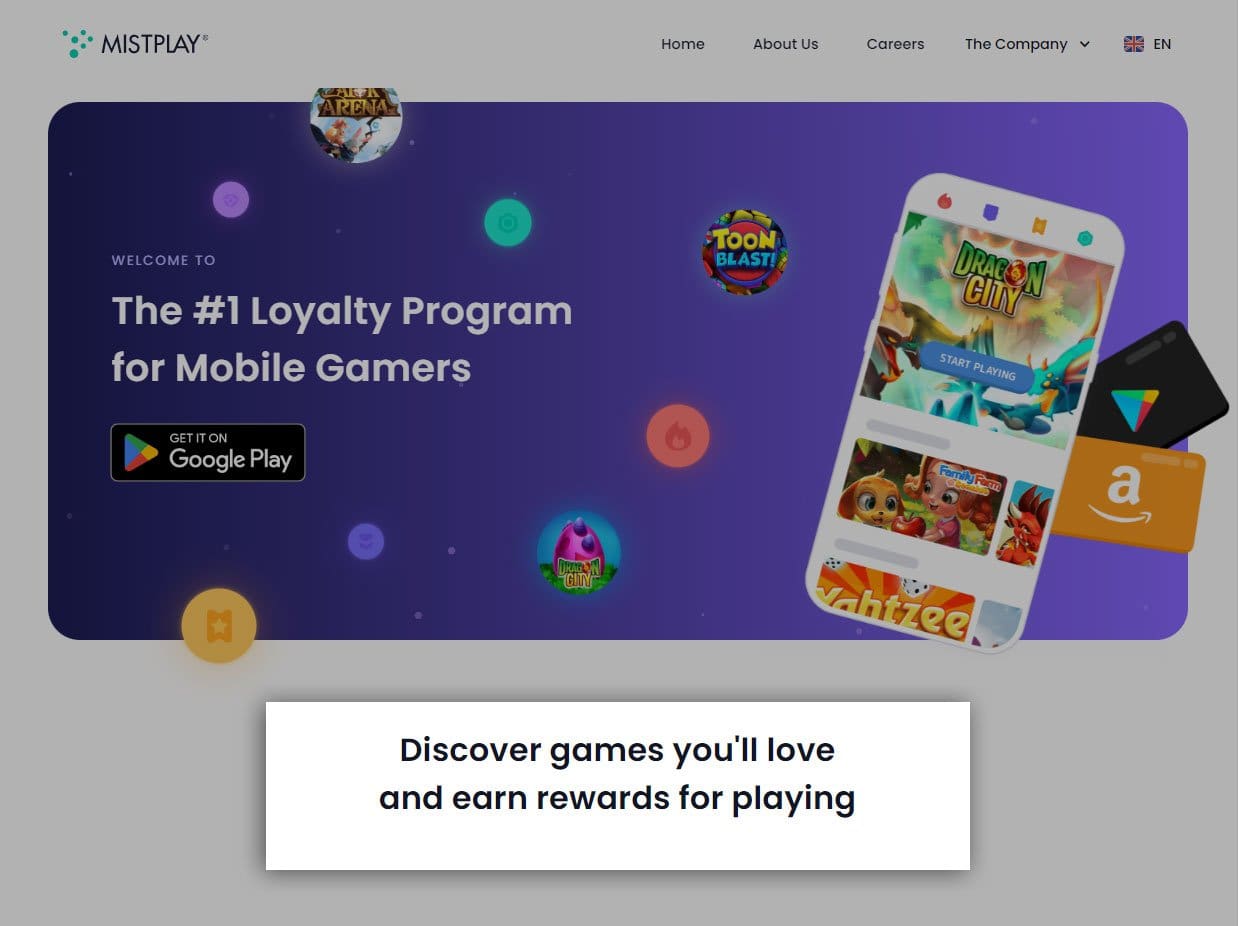 [su_note note_color="#dbeafc"]
Upfront time investment: Low-Medium
Upfront financial investment: $0
Passive income potential: $10-$100 per month
[/su_note]
Do you want to get paid for doing things you already enjoy? There are a plethora of apps that let you do just that. While many of the apps you’ll find on passive income earning lists are investment platforms, there are other options. Some of the most popular include:
[su_note note_color="#dbeafc"]
Upfront time investment: Low-Medium
Upfront financial investment: $0
Passive income potential: $10-$100 per month
[/su_note]
Do you want to get paid for doing things you already enjoy? There are a plethora of apps that let you do just that. While many of the apps you’ll find on passive income earning lists are investment platforms, there are other options. Some of the most popular include:
 [su_note note_color="#dbeafc"]
Upfront time investment: Low
Upfront financial investment: $0
Passive income potential: $.50-$5 per survey
[/su_note]
Companies need feedback from users and customers to improve their products and services, and they’re willing to pay for that information. Taking online surveys doesn’t generate a ton of money, but if you enjoy doing them, it’s a way to make a bit of extra cash just by sharing your opinions.
The Swagbucks and InboxDollars apps listed above are two places you can do this. Some other popular and reputable survey-for-cash sites include Survey Junkie, Pinecone Research, and MyPoints.
Pros:
[su_note note_color="#dbeafc"]
Upfront time investment: Low
Upfront financial investment: $0
Passive income potential: $.50-$5 per survey
[/su_note]
Companies need feedback from users and customers to improve their products and services, and they’re willing to pay for that information. Taking online surveys doesn’t generate a ton of money, but if you enjoy doing them, it’s a way to make a bit of extra cash just by sharing your opinions.
The Swagbucks and InboxDollars apps listed above are two places you can do this. Some other popular and reputable survey-for-cash sites include Survey Junkie, Pinecone Research, and MyPoints.
Pros:
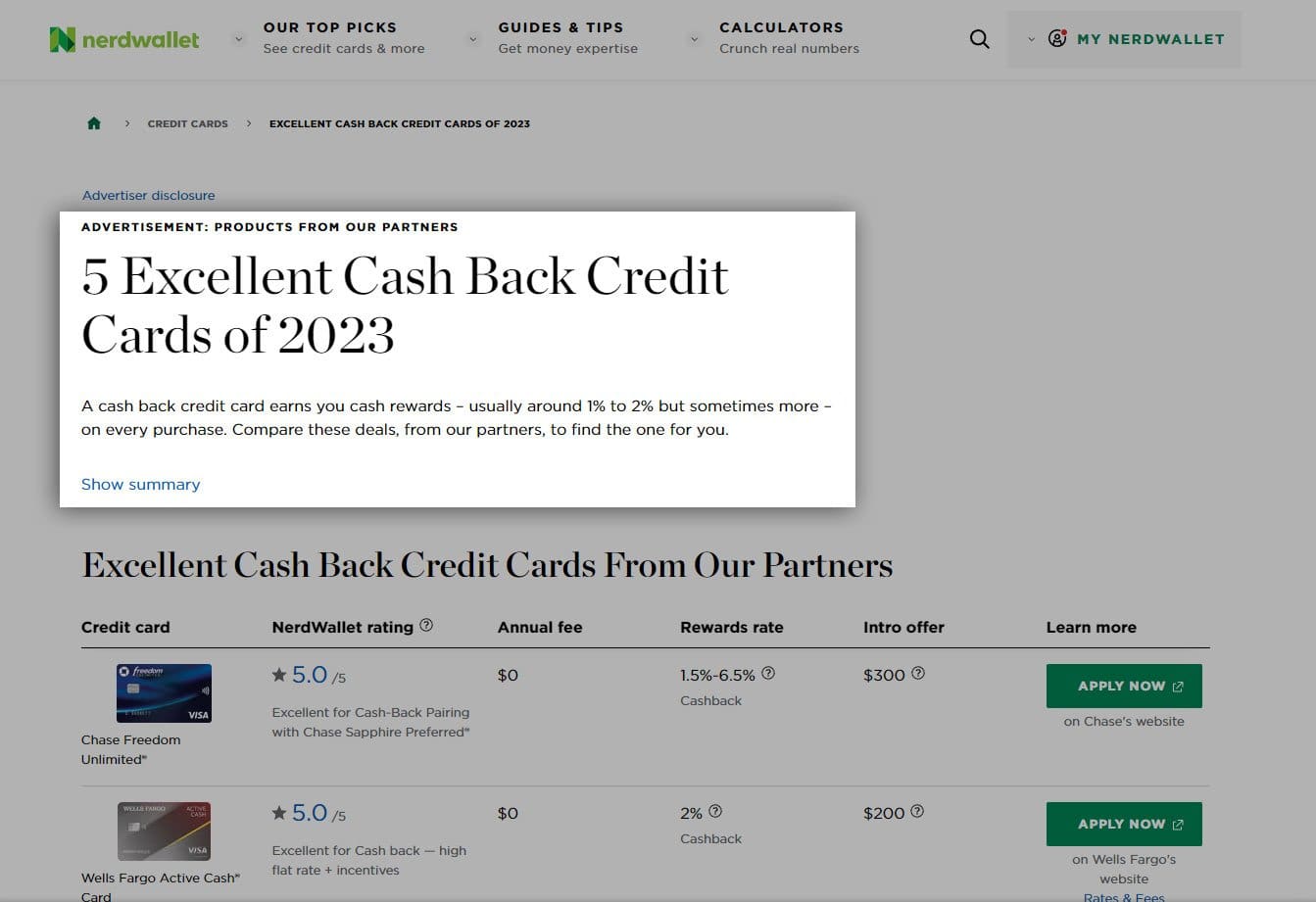 [su_note note_color="#dbeafc"]
Upfront time investment: Low
Upfront financial investment: $0
Passive income potential: 1%-10% of what you spend
[/su_note]
Getting money back for the things you buy is one of the easiest forms of passive income. The only caveat here is that you’ll need to make sure you only buy what you can pay off right away, before you’re hit with interest that wipes out those savings. Look for a card with no annual fees. Many also offer a sign-up bonus of $200-$300. Nerdwallet’s list of cashback credit cards is a great way to compare your options.
Pros:
[su_note note_color="#dbeafc"]
Upfront time investment: Low
Upfront financial investment: $0
Passive income potential: 1%-10% of what you spend
[/su_note]
Getting money back for the things you buy is one of the easiest forms of passive income. The only caveat here is that you’ll need to make sure you only buy what you can pay off right away, before you’re hit with interest that wipes out those savings. Look for a card with no annual fees. Many also offer a sign-up bonus of $200-$300. Nerdwallet’s list of cashback credit cards is a great way to compare your options.
Pros:
 [su_note note_color="#dbeafc"]
Upfront time investment: Low
Upfront financial investment: $0
Passive income potential: 1%-30% of what you spend
[/su_note]
Another way to get paid for the things you already buy is through discount and reward websites and apps. Like with cashback credit cards, you want to be careful you’re not overspending in your quest for rewards. For the things you already buy, though, you can access them through an app or website to get as much as 20% of your purchase back, which translates to more money in your pocket.
Some of the most popular sites for this:
[su_note note_color="#dbeafc"]
Upfront time investment: Low
Upfront financial investment: $0
Passive income potential: 1%-30% of what you spend
[/su_note]
Another way to get paid for the things you already buy is through discount and reward websites and apps. Like with cashback credit cards, you want to be careful you’re not overspending in your quest for rewards. For the things you already buy, though, you can access them through an app or website to get as much as 20% of your purchase back, which translates to more money in your pocket.
Some of the most popular sites for this:
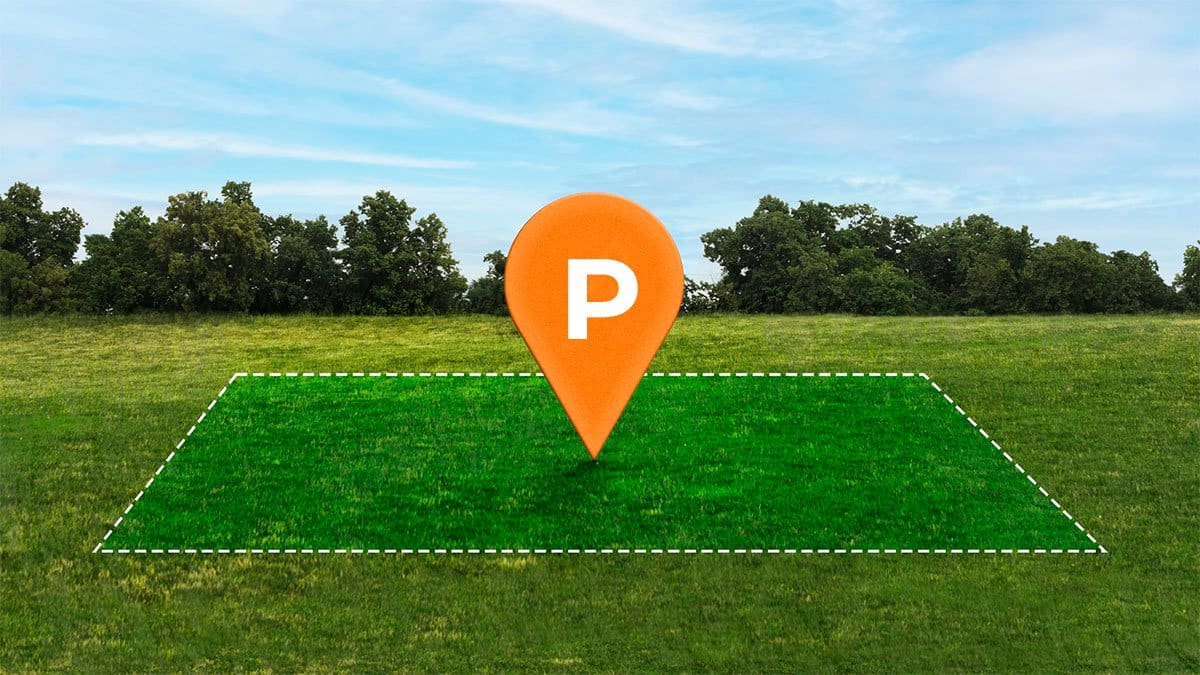 [su_note note_color="#dbeafc"]
Upfront time investment: Medium
Upfront financial investment: $10,000-$100,000
Passive income potential: High ($10K+ per month)
[/su_note]
People with vehicles need a place to park them, and the larger the vehicle, the more limited their options. Undeveloped lots are cheaper than commercial property with structures, giving this a lower financial barrier to entry than other brick-and-mortar options on this list. Once you have the lot set up, you can automate the space booking process or hire a few employees to supervise and maintain the space to make it a fully-passive income stream.
Pros:
[su_note note_color="#dbeafc"]
Upfront time investment: Medium
Upfront financial investment: $10,000-$100,000
Passive income potential: High ($10K+ per month)
[/su_note]
People with vehicles need a place to park them, and the larger the vehicle, the more limited their options. Undeveloped lots are cheaper than commercial property with structures, giving this a lower financial barrier to entry than other brick-and-mortar options on this list. Once you have the lot set up, you can automate the space booking process or hire a few employees to supervise and maintain the space to make it a fully-passive income stream.
Pros:
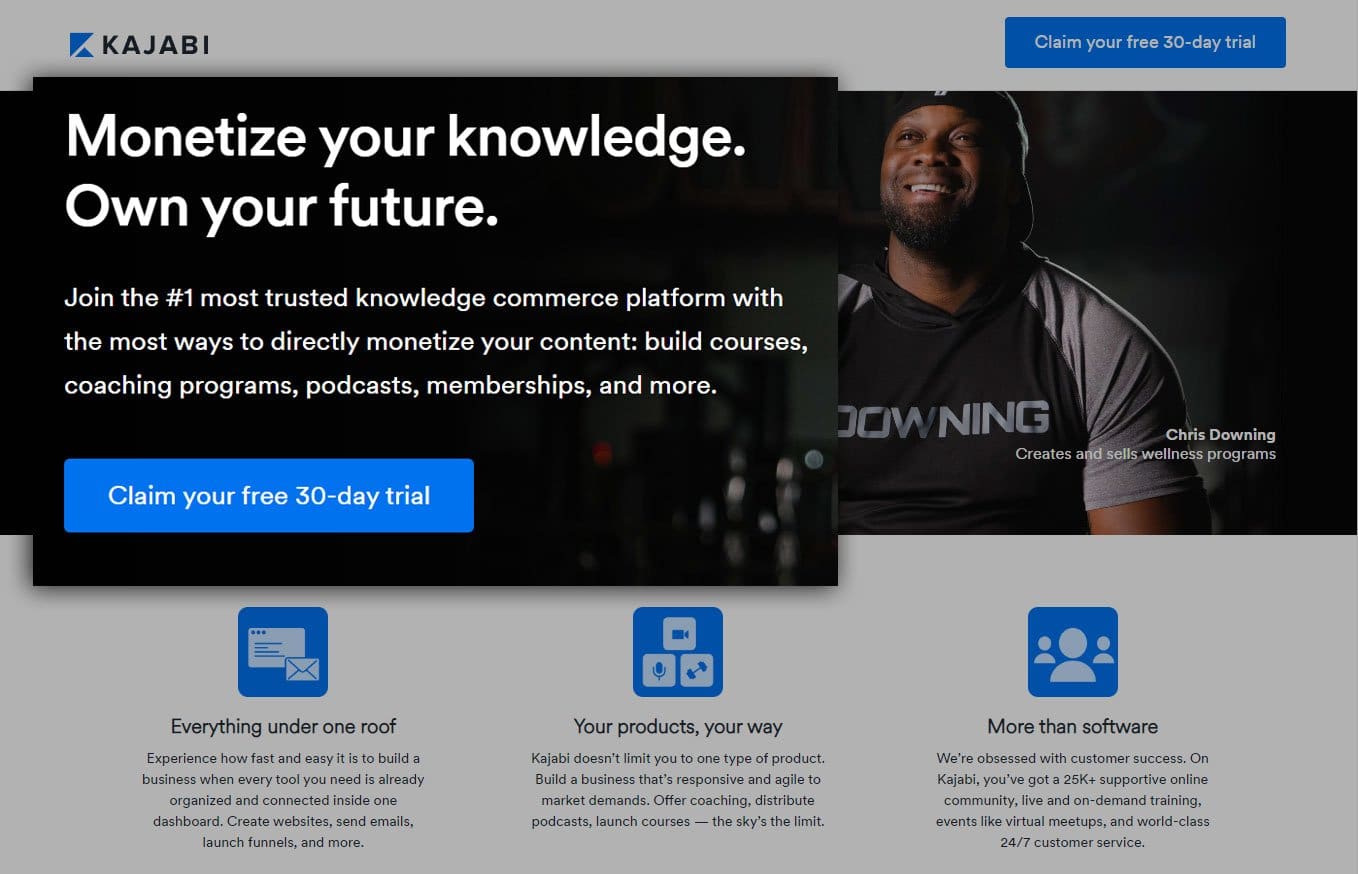 This is where those who shine at running business ventures or creating passive income differentiate themselves from those who fail. You need a system in place. Otherwise you'll burn out.
Graham started his first passive income stream with the following tech stack:
This is where those who shine at running business ventures or creating passive income differentiate themselves from those who fail. You need a system in place. Otherwise you'll burn out.
Graham started his first passive income stream with the following tech stack:
 You'll want to collect email addresses to communicate with your followers. Kajabi has built-in email collection and is really intuitive. You can even take the Kajabi Academy List Building Course to learn the best ways to build an email list using their platform.
If you prefer MailChimp, they also offer educational resources on using their platform. Here are the main things you need to know about any email list:
You'll want to collect email addresses to communicate with your followers. Kajabi has built-in email collection and is really intuitive. You can even take the Kajabi Academy List Building Course to learn the best ways to build an email list using their platform.
If you prefer MailChimp, they also offer educational resources on using their platform. Here are the main things you need to know about any email list:
 At this point, you've learned:
At this point, you've learned:
Professional house cleaning is a major industry. The global cleaning industry is currently valued at over $55 billion, and that’s expected to double by 2030. That means it's a great market for new entrants, but you'll need a house cleaning pricing guide to make sure you charge properly, which is exactly what we provide here.
[su_note note_color="#dbeafc"] Read from start to finish or click any of the links below to jump to the section you need right now.
Chris Mondragon’s wife started cleaning houses in 2015 to make some extra money. Their company, Queen Bee Cleaning, took off so quickly Chris quit his job and helped build it into a $1.5 million empire. Today, Queen Bee is also top-rated on Nextdoor, Yelp, Houzz, Thumbtack, HomeAdvisor, and Porch.
We'll share Chris’s insights to help you create a cleaning pricing guide that will allow you to make a great living in the house cleaning services industry. We'll cover the types of services and different ways to charge—and share a pricing list.
Keep reading for a rare opportunity to learn Chris's unique pricing strategies from his UpFlip-exclusive course. You'll discover exactly how he prices his cleaning services, which skyrocketed the growth of his business to $4.5M in record time.

House cleaning prices for a home should be between $100 and $800, but each house cleaning service will have different prices depending on the size of the home, the type of cleaning, and where you live.
There are three typical ways house cleaning prices are calculated by a house cleaner:
Now that you know how much to clean a home, let’s discuss the different kinds of house cleaning services.
A housecleaning service will normally offer other services besides just cleaning homes for people who live in them. They may also provide services for Airbnbs, moving, apartments, and commercial spaces. For instance, Queen Bee also offers:
Chris told us:
[su_quote]If I was to start today, I would probably focus on Airbnb cleaning because it has a higher profit margin.[/su_quote]
For standard house cleaning services, Queen Bee includes:
These are just some of the house cleaning services Queen Bee offers. You can find Chris’s complete cleaning services checklist, including 11 add-ons, in our Cleaning Business Master Course.
Let's look at what you might offer as the owner of your own house cleaning business, starting with Airbnb cleaning.
In addition to your standard offerings as a house cleaning service, Chris suggests maintaining an inventory of your own supplies to replace toiletries, kitchen essentials, and linens. For the laundry portion, you'll need to have someone do laundry or partner with a laundry service.
He also told us:
[su_quote]I charge extra for the toiletries and linens, but it basically takes me the same time as a normal home clean.[/su_quote]
Check out our interview with Chris below:
[su_youtube url="https://www.youtube.com/watch?v=d4Iip7BHXwg"]

Carpet cleaning services focus only on rugs, carpets, and other floorings. You'll need to assess your time differently from other services and have the special cleaning equipment to do the job best.
Chris shared his cleaning pricing guide for carpet cleaning, and it includes five main cleaning points with time and price for:
It's typical for a carpet cleaning business to have a minimum amount, such as $99 for two bedrooms.
Disinfecting services are focused on cleaning surfaces with medical-grade cleaning products. The goal here is on keeping the space particularly clean in a way that helps to minimize germs. I would imagine this is popular for businesses or households that have had a COVID outbreak.
Christ told us:
[su_quote]Eliminating germs & pathogens requires more than just a wipe of a towel with bleach. We use an electrostatic sprayer to apply the disinfectant. The sprayer ‘loads’ the mist with a positive charge, making the disinfectant stick to all surfaces killing 99% of the pathogens. Our hospital-grade disinfectant is an EPA-certified product safe to use around children and pets [that’s] safe on all surfaces.[/su_quote]
Deep cleaning services should include everything you do in standard house cleaning, plus baseboards and behind furniture. Chris also includes dishes in his standard deep clean service and offers a variety of additional offerings.
Deep cleaning services are normally charged at a premium compared to a standard cleaning price. For Queen Bee clients, deep house cleaning costs between $199 and $319 above the standard house cleaning prices.
So, once you know how much you'll charge for regular services, it's easy to decide how much to charge for deep cleaning a house.
Move-out cleaning is a service offered to renters to help them save time and money by helping them get their deposits back. These services include:
Chris recommends using the move-out checklist provided by the client's landlord as the basis for bidding on the cleaning job and told us:
[su_quote]I charge $279 to $479 more for move-out cleaning costs than my standard cleaning rates.[/su_quote]
Want more great tips like this? Check out all of our UpFlip courses.

Offices and commercial cleaning jobs are different for every building. Chris recommends touring the property and establishing the following:
These jobs can be more complex, but businesses need more routine cleaning services, which could be a win for you. Commercial buildings also tend to be better suited for pricing per square foot because you can assign a price per square foot to each task and then just multiply quantities. It might look like the table below. (Note that sqft = square feet.)
| Task | Quantity | Price Per Task | Total |
| Carpet (sqft) | 6,000 | .1 | $600 |
| Tile (sqft) | 10,000 | .2 | $2,000 |
| Desks | 60 | 1 | $60 |
| Windows | 600 | .1 | $60 |
| Toilets | 50 | 5 | $250 |
| Sinks | 10 | 2 | $20 |
| Kitchens | 2 | 10 | $20 |
| Counters (sqft) | 100 | .1 | $10 |
| Parking lots (sqft) | 50,000 | 0.2 | $1,000 |
| Special Requirements | N/A | 0 | 0 |
| Total | $4,020 |
Every cleaning company will have costs associated with operating. One powerful difference between a successful cleaning business and other cleaning companies is how well the business owner manages their cleaning costs. Your house cleaning prices need to cover the following expenses:
Based on Queen Bee Cleaning Service's annual expenses, you might expect your total overhead costs to be approximately 87% of the amount that you make if you have employees. If you are a single-person house cleaner, the total overhead will be between 30% and 50%.
In the following sections, we share a few examples. You can use similar math regardless of what type of cleaning business you run. Queen Bee is primarily house cleaning, so I refer to house cleaners in these sections.
Let's look at each of these to give you an idea of what they are for Queen Bee and what you can expect to pay when you start to charge for housecleaning.
Labor typically accounts for approximately 50% of the costs of running a house cleaning company. Whether this amount is going to you or your employees will vary. If you have employees, you'll typically need to pay them either an hourly rate or billable hours.
Just make sure you don't try to consider them independent contractors. Chris told us:
[su_quote]I was misclassifying the maids and got a hefty fine.[/su_quote]
To help establish an hourly rate, check what house cleaning companies in your area pay their housekeepers. The Bureau of Labor Statistics has a lot of data on the hourly rate of the house cleaning industry, too. In most places, a house cleaner will be paid an hourly rate of $15 or more.
Remember to train your staff well because employee efficiency can impact both quality and overhead.
Assuming the following:
You'll want to charge the customer no less than $60 per hour. That is far lower than the cleaning rates for many house cleaning companies. The reason is that a house cleaner has other costs that go into the standard cleaning fees.
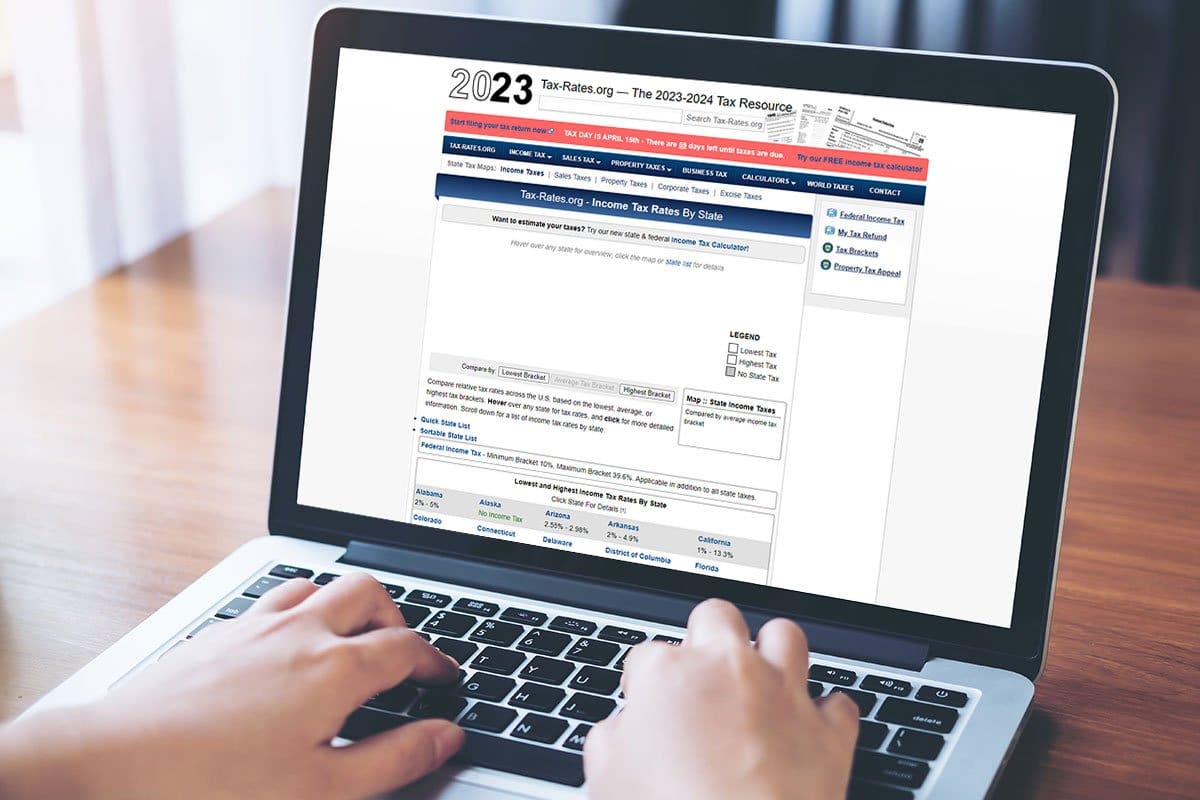
On top of employee pay, your house cleaning price will also need to cover the costs of payroll expenses and taxes. The government requires employers to collect:
There are a lot of tasks associated with compliance, so you may want to outsource your human resources. Most of these services start around $39 per month plus $6 per month for each employee.
The 7.65% tax increases the $60 per hour fee to $65 per hour, which is starting to get closer to the cleaning rates of industry leader Molly Maid, which charges $75 to $96 per hour for a basic cleaning package.
Your revenue will also need to cover other costs such as cleaning supplies, which we'll discuss next.
Based on standard cleaning services, you'll probably need to spend an average of $3 to $5 per hour on cleaning supplies. You'll be buying these in bulk to save money, but Chris estimates that the supply list for many cleaning companies will be around $900 for startup costs.
That means a rate of $70 per hour, which gets us even closer to the price your house cleaning service needs to charge.
Local businesses will have to drive to provide weekly cleaning to residential and commercial clients. That means you'll need to maintain the vehicle and meet insurance requirements. At Queen Bee, these costs are approximately 17% of the revenue.
This is why your credit score is so important to businesses. Bankrate estimates that insurance costs 25% more for an average credit score than excellent credit, and those with poor credit spend twice as much as any other group.
If you add 17% to the $70 cleaning crew rate, that brings you to $81.9 per hour—without any administrative costs, marketing costs, rent, or other utilities.
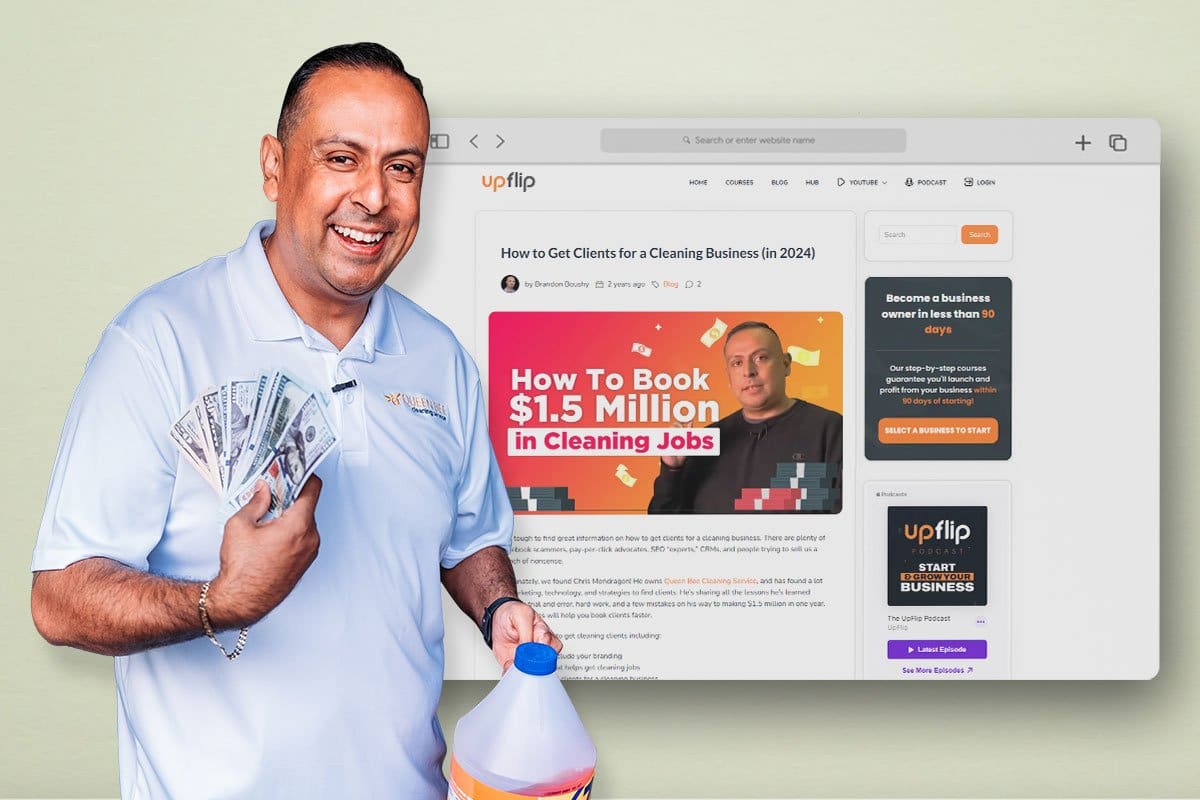
The Small Business Administration advises spending 5% to 15% of your desired revenue on marketing your cleaning business (or any other business). Chris doesn't think you need to spend that much, though
If you have good software, you can automate many of your tasks and reduce the final cost of operating. Chris runs his marketing for between 2.4% and 6.2% of revenue per month, with the lower percentages during the holidays.
Pro Tip: To learn some of the ways Chris uses marketing, check out our blog on getting clients, and don’t miss our original report on small business marketing budget statistics that will help you make the most of your marketing spend.
Chris’s rent and utilities are based on running a home-based business. These are marvelous because they are mostly legal accounting maneuvers. If you store supplies in your home or do office work out of it, you can claim the space you use and the energy associated with it on your taxes.
There are a lot of rules governing this, but if you choose the simplified method of claiming, you get an allowance of up to $1,500 a year. If use your the actual expenses, it can go higher (but may increase the chances of an audit). You'll want to measure the square footage of the space used.
You don't have to include the costs of operating from home in your house cleaning cost, but if you do, it will raise the hourly rate by about $1 per hour.
If you have a home-based business, you'll be using the energy associated with work as a write-off, but if you have a separate location where you store everything, you'll need to cover those costs.
Utilities shouldn't be too much unless your cleaning business does a lot of laundry or manufacturing in-house. To give you an idea, Chris only spends about $300 per month on utilities.
Local companies will often need a lawyer and an accountant to help them structure their domestic services correctly. You'll want to budget for these. Chris assumes approximately $1,000 per month for his cleaning company, but different cleaning services will have different needs.
There are a variety of ways to charge for a cleaning service. We'll cover the most common pricing strategies cleaning businesses use, including:

The hourly rate for house cleaning is the easiest pricing structure to use, but it can create fluctuations in costs based on how long it takes to clean the property. This works best if the client provides all the cleaning supplies and just needs someone to help. You might want to do this if a client wants specific eco-friendly or other specific cleaning supplies.
You'll probably want to charge higher for the first hour. I typically assume that it will cost me $50 just to drive somewhere. Based on Queen Bee's pricing guide, Chris has established that cleaning services prices should be approximately $70 for the travel costs and booking fees.
To calculate how much you want to charge, assume:
Divide your income goal by the hours in a year to get an hourly rate. See the example below:
$100,000 / 2,000 = $50 per hour
$50 per hour would be revenue, though. To calculate the profit, you'd need to divide the hourly by .65.
$50 / .65 = $76.92 per hour
Let's make it a nice even number, so it's easy to multiply and make it a straight $80 per hour. You need to add your first-hour fee, though. Let's use the $70 Chris uses, and that will make the first hour $150, and each additional hour $80.
That means you need five hourly cleaners to make the same $100K profit you would if you were doing all the cleaning yourself. Now, if you have five employees plus yourself, you can make $200K per year after paying your employees their house cleaning rates per hour.
The price per square foot is straightforward to estimate. Given that almost every address has a public record, you can look it up to see how many square feet their house is. Then to charge by the square foot, multiply the square feet by 20 cents (or divide by five).
2,000 x $.20 = $400
2,000 / 5 = $400
You can make it more complicated and separate it by carpet and tile, where the carpet is 20 cents and tile is 25 (examples for easy math).
(2,000*$0.20) + (1,000*$0.25) = $650
As you can see, the square foot billing can change based on the type of cleaning.

Another easy way is to price by the room or by the fixture. Chris charges a fee per room plus fees for other specific tasks. For instance, he has a table that details:
Each has a specific price, so he can quickly estimate based on the number of rooms, restrooms, and add-ons. You should really check out how he does it on the Queen Bee Cleaning Service booking page.
Pro Tip: Chris uses Booking Koala to automate the whole booking process. Check it out, and let us know what you think!
Professional cleaners have plenty of sites to help evaluate the average house cleaning cost in their areas. Many of the sites are the same ones you'll use to find customers for your house cleaning service.
For instance, Thumbtack makes it easy to establish the rates house cleaners charge in a particular area. While you're on the site, you might want to sign up to provide cleaning services.
Whether you are a residential cleaning business or offer commercial cleaning services, your cleaning company can benefit tremendously by offering regular cleaning services at a discount to loyal customers.
House cleaners benefit from offering discounts for routine cleaning in the following ways:
When you have long-term relationships you may want to have a commercial cleaning contract. Chris doesn't use them, but a lot of his suggestions still work for contracts.
We used the pricing from Queen Bee Cleaning Service to show how their subscription model increases the revenue over the course of a year. As you can see, offering a 10% monthly, 15% bi-weekly, and 20% weekly discount can dramatically increase the revenue of a house cleaning business.
Customers might want you to offer other services like appliance cleaning. Anticipate this and have easy ways to calculate cleaning cost estimates. Some of the most common add-ons are:
You can add each of these to the house cleaning cost to help improve your revenue per cleaning job. A $200 cleaning job easily turns into a full day if someone wants all the add-ons. It will increase the cleaning rate to potentially as high as $1,000 and make it so your cleaning crew only has to clean one house that day.
That's great for reducing expenses!

Whether you are doing a deep clean, home cleaning, or post-construction cleaning, people love free stuff, and businesses should, too!
Chris told us:
[su_quote]Most people don't know the square footage of their house.[/su_quote]
A free estimate gives you a chance to view the property, manage the risk of underestimating with a flat rate, and establish the square footage and whether it needs a deep clean. Plus, it gives you a chance to develop a relationship, ask questions, and help your customer develop a plan. This may increase overhead costs, but it builds loyalty.
Knowing how to correctly price your cleaning services determines if your business will grow and prosper, or fail before it even gets off the ground. Chris will show you the best pricing strategies so you can start earning $10,000 a month in just three months as you launch your business! Sign up for our exclusive seven-figure cleaning course today by clicking here.
What type of pricing do you plan to adopt with your cleaning business?
 Inbox
Inbox 
Learn from business failures and successes in 5 min or less. The stories, frameworks, and tactics that will make you a 10x better founder.
 Join our 45,000+ entrepreneurs
Join our 45,000+ entrepreneurs